Recent Advances on Drawing Technology of Ultra-Fine Steel Tire Cord and Steel Saw Wire
Abstract
1. Introduction
2. Surface Quality Control Technology of Wire Rod
2.1. Control of the Decarburization Layer on the Wire Rod Surface
- (1)
- The original decarburized layer can be effectively removed by grinding of the blank surface, which will reduce the thickness of the surface decarburized layer of the hot-rolled wire rod (Figure 3). There is a relation between the depth of the original decarburized layer on the billet surface and the thickness of the decarburized layer on the finished wire rod’s surface, as shown in Figure 4. The grinding of the original decarburized layer on the surface of the billet is critical for the thickness reduction of the decarburized layer on the surface of the finished wire rod.
- (2)
- In hot-rolling, the depth of surface decarburization layer of hot-rolled wire rod for a P72LXA steel cord can be reduced by decreasing the actual high-temperature area (900–1050 °C) of the billet heating section and extending the low-temperature area (600–800 °C) of the preheating section.
- (3)
- The surface decarburized layer can be transformed into an oxide layer by the proper increasing of the spinning temperature, as shown in Figure 5 and Figure 6. As shown in Figure 6a, when the wire spinning temperature of the wire rod is 1000 °C, there is almost no decarburization layer, but the surface iron oxide scale is thick, which is 13~20 μm.
2.2. Control of Oxide Scale on the Wire Rod Surface
2.3. Removal of Oxide Scale from the Wire Rod Surface
3. Water Bath Instead of Lead Bath Heat Treatment
- (1)
- In the range from 850 to 580 °C, the steel wire needs to be rapidly cooled without ferrite or coarse pearlite formation.
- (2)
- To ensure smooth quenching, the heat treatment medium should not adhere to the steel wire surface. No chemical reaction with steel wire and steel wire corrosion should occur.
- (3)
- The heat treatment medium should keep a constant temperature in the range of 400–600 °C, without changing the physical state, decomposition, and volatilization.
- (4)
- The heat treatment medium should have a large volumetric specific heat capacity, which ensures continuous heat absorption from the steel wire without a substantial increase in the local temperature, so the overall temperature will not significantly fluctuate.
- (1)
- Initial stage of cooling: when the steel wire is just immersed in static water, the surface temperature drops sharply, and the maximum cooling rate can reach 900 °C/s. Simultaneously, the surrounding water vaporizes rapidly and forms bubbles to prevent the steel wire temperature from further decreasing. The initial stage time generally does not exceed 1 s.
- (2)
- Stable film boiling stage: when the water around the steel wire is vaporized, the steel wire is enclosed in the steam film, which immediately slows down the cooling rate, and the cooling enters the stable film boiling stage. There are bubbles escaping from water, and the heat transfer from the steel wire mainly relies on the steam film conduction, heat radiation, and water flow around the steam film. This stage is the slowest.
- (3)
- Stable and unstable film boiling stage: also known as a variable boiling stage. The steam film is constantly broken, and more bubbles escape. Simultaneously, a new steam film continuously forms, enabling direct contact between the steel wire surface and water, and the cooling rate are significantly accelerated. When the steel wire temperature drops to a value level, the steam film on the surface completely collapses.
- (4)
- Nucleate boiling stage: in this stage, water is in direct contact with the steel wire surface and boils abruptly, forming a large number of bubbles that enhance the heat transfer effect of water convection. This stage has the highest cooling rate among the five cooling stages. When the steel wire temperature is close to the boiling point of water, the bubble formation is almost completely exhausted.
- (5)
- Convection heat transfer stage: the water surface is calm, and the steel wire cools down by natural convection. The water temperature around the surface is higher than the temperature of adjacent water layers, dissipating the heat.
- (1)
- How can we ensure a fast cooling down of the fully austenitized steel wire from the temperature range of 950–850 to the temperature range of 580–450 °C? At the same time, ferrite or pearlite should be avoided.
- (2)
- How can we ensure that the steel wire is cooled down to 400 °C without generating bainite and martensite?
- (3)
- How can we ensure the isothermal transformation of the super-cooled austenite in the temperature range of 580–450 °C and the sorbiti production with the same spacing between the plates?
4. Research Progress in Copper Plating on the Steel Wire Surface
4.1. CPA Brass Plating Process
4.2. Hot-Dip Brass Process
4.3. Development of New Coating Materials
4.3.1. Zn-Ni/Zn-Co Alloy Coating
- (1)
- The as-deposited (Ni-22 wt% Zn)/(Zn-5 wt% Ni) coating cracking close to the steel wire surface and far from the rubber surface, indicated that the coating structure was not uniform. After the moisture aging test of the cold-rolled coating, the cracking became more irregular. In contrast, the plane became uneven compared with the previous one, indicating poor bonding between the coating and rubber.
- (2)
- The deposited Cu-Zn coating results had cracks completely in the rubber, and the cracking surface was uneven. After wet aging of the cold-rolled coating, the cracking pattern occurred simultaneously between the coating and rubber, and the cracked surface was not smooth.
- (3)
- The as-deposited (Ni-Zn)/(Zn-Co) coating had cracks in the center of the rubber. The cracked surface was very smooth, indicating that the coating and rubber were closely bonded, with good microstructural uniformity. After the moisture aging test of the cold-rolled coating, the cracks occurred only in the rubber and deviated from the central line, but the cracking surface was still smooth.
4.3.2. Zn-Co Alloy Coating
4.3.3. Zn-Mn Alloy Coating
4.3.4. Cu-Zn-Co Ternary Alloy Coating
5. Research Progress in Steel Wire Drawing Technology
5.1. A Novel Alternative Drawing Process
5.2. Dry Drawing Process
- (1)
- Improved surface roughness of dry-drawn steel wire (Figure 31), which increases the powder content on the surface of dry-drawn steel wire and the lubrication effect of the dry drawing.
- (2)
- Improved breaking force of the medium steel wire that did not affect the torsional properties of Cu-plated steel wire and single wire.
- (3)
- Decreased the pearlite lamellar spacing of steel wire, simultaneously improving the breaking strength and area reduction of Cu-plated steel wire. When the steel wires are dry drawn and have the same diameters, the tensile strength difference between the two kinds of steel wires is very small, which are 1165 MPa and 1175 MPa, respectively.
- (4)
- Affect on the coating, wet drawing, and twisting yield of Cu-plated steel wire, as well as the adhesion properties of the finished cord.
- (1)
- The total compression rate increases in the novel dry drawing process, and the stress variable of the dry-drawn steel wire also increases, which decreases the torsional value of the middle tension steel wire. The deterioration of the torsional properties of the steel wire must be the result of the deterioration of the microstructure, but Q. S. Qian et al. did not provide a convincing explanation.
- (2)
5.3. Effect of the Wet Drawing Speed on Microstructure and Properties of Steel Wire
6. Research Progress in Dies for Steel Wire Drawing
6.1. Cemented Carbide Mold
6.2. Natural Diamond Mold
6.3. PCD Diamond Mold
6.4. CVD Diamond Mold
7. Conclusions and Prospects
- (1)
- Phase composition of oxide scale on the wire rod’s surface needs to be controlled to protect the steel wire matrix, facilitate storage and long-distance transportation, and improve mechanical descaling while ensuring that the thickness is not too high, reducing the metal yield. There are several qualitative studies about these problems, but there is no accurate quantitative investigation.
- (2)
- There are many difficulties in the implementation of water bath treatment instead of lead bath treatment. One of the problems is the development of a suitable water bath quenching medium.
- (3)
- The electroplating process of steel wire surface: (1) hot-dip brass plating process can effectively improve the coating structure and steel wire structure, but compared with the most advanced CPA copper plating process, the efficiency may not be high enough. On the other hand, the hot-dip brass plating process yields more severe environmental pollution. (2) New coating alloys being developing. Cu-Zn-Co coating is the most promising to replace brass. The Bekaert company performs industrial trial production and expects to enter the market soon.
- (4)
- Steel wire drawing process: (1) the novel alternative drawing process can effectively improve the structure and properties of steel wire, but there is not enough relevant research, (2) the novel dry drawing process can reduce the process flow and improve the production efficiency, and (3) with the C content increase in cord steel and saw wire steel, it is necessary to conduct further research. The optimal speed of the wet drawing process needs to be adjusted simultaneously to select the best processing parameters.
- (5)
- A CVD diamond die is the most promising die for steel wire drawing. However, its plasticity and bonding between the die and the die substrate must be improved to facilitate production and processing.
Author Contributions
Funding
Conflicts of Interest
References
- Meißner, D.; Schoenfelder, S.; Hurka, B.; Zeh, J.; Sunder, K.; Koepge, R.; Wagner, T.; Grün, A.; Hagel, H.-J.; Moeller, H.J.; et al. Loss of wire tension in the wire web during the slurry based multi wire sawing process. Sol. Energy Mater. Sol. Cells 2014, 120, 346–355. [Google Scholar] [CrossRef]
- Takaaki, M.; Noriaki, H.; Takao, S. Developments in steel cord wire rods. RD Kobe Steel Eng. Rep. 2002, 50, 31–35. [Google Scholar]
- Wang, K.; Jiang, M.; Wang, X.; Wang, Y.; Zhao, H.; Cao, Z. Formation mechanism of CaO-SiO2-Al2O3-(MgO) inclusions in si-mn-killed steel with limited aluminum content during the low basicity slag refining. Met. Mater. Trans. A 2016, 47, 282–290. [Google Scholar] [CrossRef]
- Pack, A. Tracing the Origin of Oxide Inclusions in Continuously Casted Steel Using Stable Oxygen Isotopes-An Interdisciplinary Approach. Unpublshed Ph.D. Thesis, 2000. [Google Scholar]
- Liu, Z.Z.; Zeng, H.S.; Ding, C.J.; Zhang, D.M. Technology for reduction of thickness of decarburization layer in cord steel. Wuhan Iron Steel Corp. Technol. 2005, 6, 12–15. [Google Scholar] [CrossRef]
- Li, Q.; Zhu, K.; Qian, X.H.; Li, X.D.; Zeng, J.M. Study on decarburization behavior of SWRH77A wire rod. Meral Mater. Metall. Eng. 2020, 4, 3–8. [Google Scholar]
- Cao, A.R.; Li, Y.F.; Wang, J.; Han, M.D. Study on oxidation and decarburization characteristics of spring steel 55SiCr. Met. Heat Treat. 2010, 9, 51–55. [Google Scholar]
- Cai, H.Y.; Zhang, Z.H.; Zhang, C. Study on surface decarburization of 60Si2Mn spring steel. Metalwork 2005, 3, 35–37. [Google Scholar] [CrossRef]
- Wen, H.Q.; Xiang, S.H.; Zhang, Y.J.; Han, M.D.; Tao, S.M. Effect of heating temperature on surface decarburization of 60Si2Mn spring steel. Baosteel Technol. 2008, 3, 44–47. [Google Scholar] [CrossRef]
- Zhao, R.L.; Li, Y.C.; Wang, H.L.; Li, R.H.; Zhang, Y.G.; Zhao, P. Study on decarburization layer of hot rolled wire rod for P72LXA steel cord. Met. Heat Treat. 2013, 7, 65–69. [Google Scholar]
- Yi, R. Decarburization of steel surface under high speed rolling and controlled cooling. Iron Steel. 1994, 2, 35–39. [Google Scholar] [CrossRef]
- Kong, J.Q.; Zhang, Q.Z.; Chen, G.P. Process analysis of high quality hard wire produced by high speed wire rod mill. Metalwork 2004, 2, 33–35. [Google Scholar] [CrossRef]
- Zhang, Q.G.; Chen, B.; Zhao, Z.Y.; Zhai, L.F.; Li, X.H.; Jia, L.K. Control and research of surface oxide thickness of high carbon steel wire rod. Steel Wire Prod. 2014, 3, 31–34. [Google Scholar] [CrossRef]
- Lin, C.; Liu, H.Y.; Wang, H.J.; Xu, H.B.; Lu, J.D. Formation of scale during isothermal and controlled cooling of cord steel. J. Iron Steel Res. 2015, 6, 43–47. [Google Scholar] [CrossRef]
- Chattopadhyay, A.; Kumar, P.; Roy, D. Study on formation of “easy to remove oxide scale” during mechanical descaling of high carbon wire rods. Surf. Coat. Technol. 2009, 203, 2912–2915. [Google Scholar] [CrossRef]
- Guo, D.Y.; Gao, H.; Ren, Y.H.; Wang, B.X.; Che, A. Effect of rolling and wire drawing temperature on mechanical descaling performance of oxide scale of high carbon steel wire rod. J. Iron Steel Res. 2013, 12, 23–27. [Google Scholar]
- Tanei, H.; Kondo, Y. Effects of initial scale structure on transformation behavior of wüstite. ISIJ Int. 2012, 52, 105–109. [Google Scholar] [CrossRef][Green Version]
- Wang, L.P.; Wang, L.F.; Luo, Z.J.; Ma, Y. Research on optimization process and control mechanism of surface oxidation of tire cord steel. Mater. Sci. Technol. 2014, 1, 94–99. [Google Scholar]
- Wang, M.; Wang, L.F.; Wang, L.P.; Li, S.J.; Wang, Y.; Wang, Z.Y. Fracture analysis of cord wire steel during mechanical descaling. Heat Treat. Met. 2011, 10, 92–94. [Google Scholar]
- Wang, Y.; He, L.; Xu, Q.; Zhou, X.; Mao, C. Study on the application of neutralization method in the treatment of pickling waste liquid of steel cord. Hans J. Chem. Eng. Technol. 2017, 7, 22–30. [Google Scholar] [CrossRef]
- Qi, X.Y.; Gao, D.L. Comparison of scale removal process of wire rod for bead wire. Met. Prod. 2020, 2, 24–27. [Google Scholar]
- Cao, X.L.; Zhai, Z.H. Comparison of microstructure and properties between lead bath quenching and water bath quenching for cord steel wire. Met. Prod. 2010, 4, 39–42. [Google Scholar] [CrossRef]
- Xu, X.Q. New Products and New Technologies of Special Steel Wire; Metallurgical Industry Press: Beijing, China, 2016; p. 261. [Google Scholar]
- Luo, X.; Li, F. Metallurgical behaviours of high-carbon steel wires in lead bath and CMC aqueous solutions by cooling curve analysis. Int. J. Mater. Prod. Technol. 2005, 24, 142. [Google Scholar] [CrossRef]
- Liu, Y.S. Requirements of meridian tyre on the basic property of steel cord. Steel Wire Prod. 2000, 3, 34–37. [Google Scholar] [CrossRef]
- Qian, Q.S. Study on necking fracture of brass-coated steel wire produced by heat diffusion electroplating during wet drawing. Electroplat. Finish. 2015, 7, 404–408. [Google Scholar] [CrossRef]
- Wolfgang, W. Effect of controllable Cu-electroplating technology on quality of steel cord. In Proceedings of the 20th Annual Meeting of National Metalwork Information Network. China Society of Metals, Suzhou, China, 5–6 October 2004; pp. 284–287. [Google Scholar]
- Chen, W.J. Effect of new technology of electroplating brass on quality of steel cord. In Proceedings of the Information Exchange Meeting on New Technology and Equipment of Metal Products. China Society of Metals, Yangzhou, China, 11–12 April 2006; pp. 183–187. [Google Scholar]
- Werner, P.; Sergei, I. Innovative technology for brass plating-CPA-wire tec-a new degree of production and quality for steel cord. In Proceedings of the International Symposium on wire rod products. China Society of Metals, Beijing, China, 15–16 November 2006; pp. 24–30. [Google Scholar]
- Werner, P. Improvement of CPA plating technology. Steel Wire Prod. 2008, 1, 50–52. [Google Scholar] [CrossRef]
- Ning, F.F. Effect of heat treatment and electroplating process on broken wire rate of steel cord. In Proceedings of the Annual Meeting of National Metal Products Information Network and Technical Information Exchange Meeting of Metal Products Industry. China Society of Metals, National Metal Products Information Network, Changzhou, China, 26–28 October 2016; pp. 137–139. [Google Scholar]
- Wang, K.; Wang, B.Y.; Song, W. Development of new type heat treatment electroplating brass continuous line. Steel Wire Prod. 2014, 1, 16–21. [Google Scholar] [CrossRef]
- Wang, T.C. Probe into Several Problems in Debugging of Mani-Wire Brass Electroplating Line with Diffussion Method Annual Meeting Paper of National Metal Products Information Network; China Metal Society, National Metalwork Information Network: Beijing, China, 2001; pp. 155–157. [Google Scholar]
- Song, W. Technology research and development of domestic brass electroplating production line. Steel Wire Prod. 2011, 1, 41–44. [Google Scholar] [CrossRef]
- Wang, T.C. Adjustment of thermodiffusion multiwire brass plating line. Steel Wire Prod. 2002, 1, 17–20. [Google Scholar] [CrossRef]
- Yang, W.F.; Qian, Q.S.; Yang, Q.X. Microstructure and mechanical properties of hot-dip brass-plated steel wire for steel cord. Electroplat. Finish. 2019, 7, 305–310. [Google Scholar] [CrossRef]
- Cheng, S.P. The Influence of Cu-Zn Coating to Properties of Radial Tire; Northeastern University: Shenyang, China, 2015. [Google Scholar]
- Chanel, S.; Pébère, N. An investigation on the corrosion of brass-coated steel cords for tyres by electrochemical techniques. Corros. Sci. 2001, 43, 413–427. [Google Scholar] [CrossRef]
- Buytaert, G.; Luo, Y.; Wang, B. Superior adhesion of rubber and steel cord coated with Cu-Zn-Co ternary alloy. Rubber World 2015, 252, 20–25. [Google Scholar]
- Ishikawa, Y. Bond between steel cord and rubber (1)- Formation and interface behavior of brass plating and rubber adhesion of steel cords. J. Jpn. Rubber Soc. 2017, 5, 213–218. [Google Scholar]
- Ishikawa, Y. Bond between steel cord and rubber (2)—Desk history of adhesion formation. J. Jpn. Rubber Soc. 2017, 9, 456–462. [Google Scholar] [CrossRef]
- Ishikawa, Y. Bond between steel cord and rubber (3)—Steel cord flourish and rubber adhesive interface ageing. J. Jpn. Rubber Soc. 2017, 11, 517–522. [Google Scholar] [CrossRef]
- Ishikawa, Y. Bond between steel cord and rubber (4). J. Jpn. Rubber Soc. 2018, 1, 9–12. [Google Scholar] [CrossRef][Green Version]
- Ishikawa, Y. Bond between steel cord and rubber (5). J. Jpn. Rubber Soc. 2018, 3, 93–98. [Google Scholar] [CrossRef]
- Zhu, C.L.; Yao, L.L.; Zhou, Z.S.; Wei, Y.B.; Wang, T.; Ke, Z.G. Study on diffusion mechanism of Fe based Zn Co coating on steel wire. Tire Ind. 2020, 4, 247–251. [Google Scholar]
- Luo, Y.W. Application of high strength St/UT steel cord in low rolling resistance tire. In Proceedings of the China Rubber Annual Meeting, Shandong, China, 19–22 March 2012; China Rubber Industry Association: Beijing, China, 2012; pp. 190–192. [Google Scholar]
- Hu, Z.M.; Jiang, R.Q. Development of high strength steel cord. Tire Ind. 2002, 11, 655–657. [Google Scholar] [CrossRef]
- Giridhar, J. Development of a New NiZn/ZnCo Alloy Coating System for Steel Tire Cords and Study of the Mechanism of Its Adhesion to Natural Rubber Compounds; University of Colorado: Boulder, CO, USA, 1992. [Google Scholar]
- Giridhar, J.; van Ooij, W. Study of Zn-Ni and Zn-Co alloy coatings electrodeposited on steel strips I: Alloy electrodeposition and adhesion of coatings to natural rubber compounds. Surf. Coat. Technol. 1992, 52, 17–30. [Google Scholar] [CrossRef]
- Giridhar, J.; van Ooij, W. Study of Zn-Ni and Zn-Co alloy coatings electrodeposited on steel strips II: Corrosion, dezincification and sulfidation of the alloy coatings. Surf. Coat. Technol. 1992, 53, 35–47. [Google Scholar] [CrossRef]
- Giridhar, J.; van Ooij, W. Adhesion and corrosion properties of a new NiZn/ZnCo-coated steel tire cord. Surf. Coat. Technol. 1992, 53, 243–255. [Google Scholar] [CrossRef]
- Cipparrone, M.; Pavan, F.; Orjela, G. Alternatives to brass for coating tire steel cord. Wire J. Int. 1998, 6, 78–92. [Google Scholar]
- Luo, Z.X. Development of steel cord plating in advanced countries. Tire Ind. 2005, 4, 195–198. [Google Scholar] [CrossRef]
- Cipparrone, M.; Afresti, S.; Doujak, S.; Pavan, F.; Ratti, G.; Liu, X.H. Mn-Zn alloy coating of steel cord. Tire Technol. Int. 2003, 4, 32–35. [Google Scholar]
- Yong, Z.F. New Zn Mn coated steel cord. China Rubber Sci. Technol. Mark. 2006, 20, 13–14. [Google Scholar]
- Jeon, G.S. Adhesion between rubber compounds and ternary-alloy-coated steel cords, Part I: Effect of cobalt plating amount in ternary-alloy-coated steel cords. J. Adhes. Sci. Technol. 2005, 19, 445–465. [Google Scholar] [CrossRef]
- Jeon, G.S.; Kang, U.I.; Jeong, S.W.; Choi, S.J.; Kim, S.H. Adhesion between rubber compounds and ternary-alloy-coated steel cords. Part II: Effects of sulfur and cobalt salt in rubber compounds. J. Adhes. Sci. Technol. 2005, 19, 1325–1348. [Google Scholar] [CrossRef]
- Buytaert, G.; Luo, Y. Study of Cu-Zn-Co ternary alloy-coated steel cord in cobalt-free skim compound. J. Adhes. Sci. Technol. 2014, 28, 1545–1555. [Google Scholar] [CrossRef]
- Wang, B.X.; Luo, Y.W.; Buytaert, G. Study on adhesive force between ternary alloy coated steel cord and cobalt free tire compound. Tire Ind. 2015, 9, 557–560. [Google Scholar] [CrossRef]
- Jiang, P.Y.; Luo, Y.W.; Buytaert, G. Ternary-alloy-coated steel cord assist green tire. In Proceedings of the Data Collection of New Green Impregnating Materials and New Environmental Protection Technology Development Conference of Rubber and Plastic Green Manufacturing Professional Committee of China Chemical Industry Association, Wuxi, China, 13–15 June 2019; pp. 103–110. [Google Scholar]
- Ma, H.J.; Wang, B.X.; Liu, L. Testing, characterization and analysis of adhesion force of steel cord with different coatings in corresponding adhesive systems. Tire Ind. 2018, 2, 117–120. [Google Scholar] [CrossRef]
- Lv, J.F.; Jin, Z.H.; Hu, K.; Chai, D.L.; Chen, J.H. Application of berteway three phase alloy coated steel cord in tire. Tire Ind. 2020, 8, 488–494. [Google Scholar] [CrossRef]
- Toribio, J. Cold-drawn pearlitic steels as hierarchically structured materials: An approach to Johann Sebastian Bach. Key Eng. Mater. 2018, 774, 492–497. [Google Scholar] [CrossRef]
- Toribio, J. Evolution of fracture behaviour in progressively drawn pearlitic steel. ISIJ Int. 2002, 42, 656–662. [Google Scholar] [CrossRef]
- Zhou, Y.; Zhao, X.Y.; Zhai, Z. Research progress of lubricant for steel wire drawing. Appl. Chem. Ind. 2017, 2, 378–391. [Google Scholar] [CrossRef]
- Ma, M.G. The Influence of Drawing Process and Die on the Mechanical Properties of Steel Wire; Guizhou University: Guiyang, China, 2006. [Google Scholar] [CrossRef]
- Ning, L. Microstructure and Mechanical Properties of Cold Drawn Steel Wires. Master’s Thesis, Edith Cowan University: Joondalup, WA, Australia, 2012. [Google Scholar]
- Ciganik, C. Influence of Processing and Composition on the Strength and Torsional Ductility of High Strength Steel Wire; Colorado School of Mines: Golden, CO, USA, 2017. [Google Scholar]
- Cai, W. Development on the High-Carbon Wire for Cutting Hard-Brittle Material and Research on the Organization and Performance of the Wire; Zhejiang University of Technology: Hangzhou, China, 2011. [Google Scholar] [CrossRef]
- Nagashima, H.; Yoshida, K. Ductility improvement of high carbon steel wire by alternate wire drawing. Key Eng. Mater. 2016, 716, 22–31. [Google Scholar] [CrossRef]
- Qian, Q.S.; Wang, X.L.; Zhu, J.; Liu, S.J.; Sun, R.J.; Lv, H. Study on new dry-drawing process for cord steel wire. Steel Wire Prod. 2013, 6, 10–16. [Google Scholar] [CrossRef]
- Zhang, X.; Godfrey, A.; Hansen, N.; Huang, X.; Liu, W.; Liu, Q. Evolution of cementite morphology in pearlitic steel wire during wet wire drawing. Mater. Charact. 2010, 61, 65–72. [Google Scholar] [CrossRef]
- Zhang, X.D.; Godfrey, A.; Hansen, N.; Huang, X.; Wei, L.; Liu, Q. Cementite deformation and dissolution in a cold-drawn pearlitic steel wire. Heat Treat. Met. 2009, 9, 8–12. [Google Scholar]
- Zhang, X.D. Quantitative Investigation of Microstructural Evolution during Cold Wire Drawing of a Pearlitic Steel Wire and Its Relationship with Mechanical Properties; Tsinghua University: Beijing, China, 2009. [Google Scholar]
- Zhang, X.; Liu, Q. Evolutions of microstructure and ferritic micro-orientation and texture in a pearlitic steel wire during cold drawing. Acta Met. Sin. 2010, 46, 141–146. [Google Scholar] [CrossRef]
- Yang, C.L.; Wang, Z.H.; Ge, P.D. Fracture analysis of steel wire for cord during wet drawing process. Steel Wire Prod. 2013, 6, 6–9. [Google Scholar]
- Yao, H.D.; Zhai, C.L.; Zhai, C.Y. Effect on tensile strength of the filament in wet drawing process. Steel Wire Prod. 2010, 6, 17–19. [Google Scholar]
- Takahashi, J.; Kosaka, M.; Kawakami, K.; Tarui, T. Change in carbon state by low-temperature aging in heavily drawn pearlitic steel wires. Acta Mater. 2012, 60, 387–395. [Google Scholar] [CrossRef]
- Zhang, X.; Wang, C.X.; Shi, Q.N. Technological situation of steel wire for steel cord of radial tire. J. Iron Steel Res. 2007, 1, 1–5. [Google Scholar] [CrossRef]
- Vedeneev, A.V. New trends in steel cord development. Ztschrift Für Rztliche Fortbild. 2012, 12, 623–629. [Google Scholar] [CrossRef]
- Tashiro, H. Piano wire of the highest tensile strength steel. Mater. Jpn. 1996, 35, 1177–1181. [Google Scholar] [CrossRef][Green Version]
- Zelin, M. Microstructure evolution in pearlitic steels during wire drawing. Acta Mater. 2002, 50, 4431–4447. [Google Scholar] [CrossRef]
- Liu, S.J.; Qian, Q.S.; Zhang, Z.Y.; Mei, Y.D.; Wang, J. Effects of wet drawn speed on property of 0.92 wt.% C brass-plated steel wire used for steel cord. Mater. Mech. Eng. 2015, 9, 64–67. [Google Scholar] [CrossRef]
- Sakamoto, M.; Tesima, T.; Nakamura, K. Wire rod for high tensile strength steel cord. Nippon. Steel Tech. Rep. 2019, 122, 129–136. [Google Scholar]
- Wang, Y.; Zhang, C.H. Research on lubricating properties of drawing fluid. J. Tribol. 2020, 2, 1–14. Available online: http://kns.cnki.net/kcms/detail/62.1095.O4.20200804.0944.002.html (accessed on 14 August 2020).
- Lu, R.; Minarro, L.; Su, Y.-Y.; Shemenski, R.M. Failure mechanism of cemented tungsten carbide dies in wet drawing process of steel cord filament. Int. J. Refract. Met. Hard Mater. 2008, 26, 589–600. [Google Scholar] [CrossRef]
- Takada, M.; Matsubara, H.; Kawagishi, Y. Wear of cemented carbide dies for steel cord wire drawing. Mater. Trans. 2013, 54, 2011–2017. [Google Scholar] [CrossRef]
- Lee, S.K.; Ko, D.C.; Kim, B.M. Effect of abrasive particle size on wear and fracture of wc drawing die for brass coated high carbon steel cord wire. Steel Res. Int. 2008, 2, 20–27. [Google Scholar]
- Shen, K.; Ma, H.; Liao, S.L.; Yu, X.S. Overview and quality analysis of high strength cord steel. In Proceedings of the 2015 National Symposium on wire rod and small section steel. China Society of Metals, Yichang, China, 25 June 2015; pp. 30–61. [Google Scholar]
- Liu, X.J. The properties of CVD wire-drawing die and its advantages. J. Hebei Acad. Sci. 2006, 2, 61–63. [Google Scholar] [CrossRef]
- Zhang, Z.M.; Shen, H.S.; Sun, W.H.; He, X.C.; Wan, Y.Z. Fabrication and application of CVD diamond-coated drawing die. Tool Eng. 2000, 4, 13–15. [Google Scholar] [CrossRef]
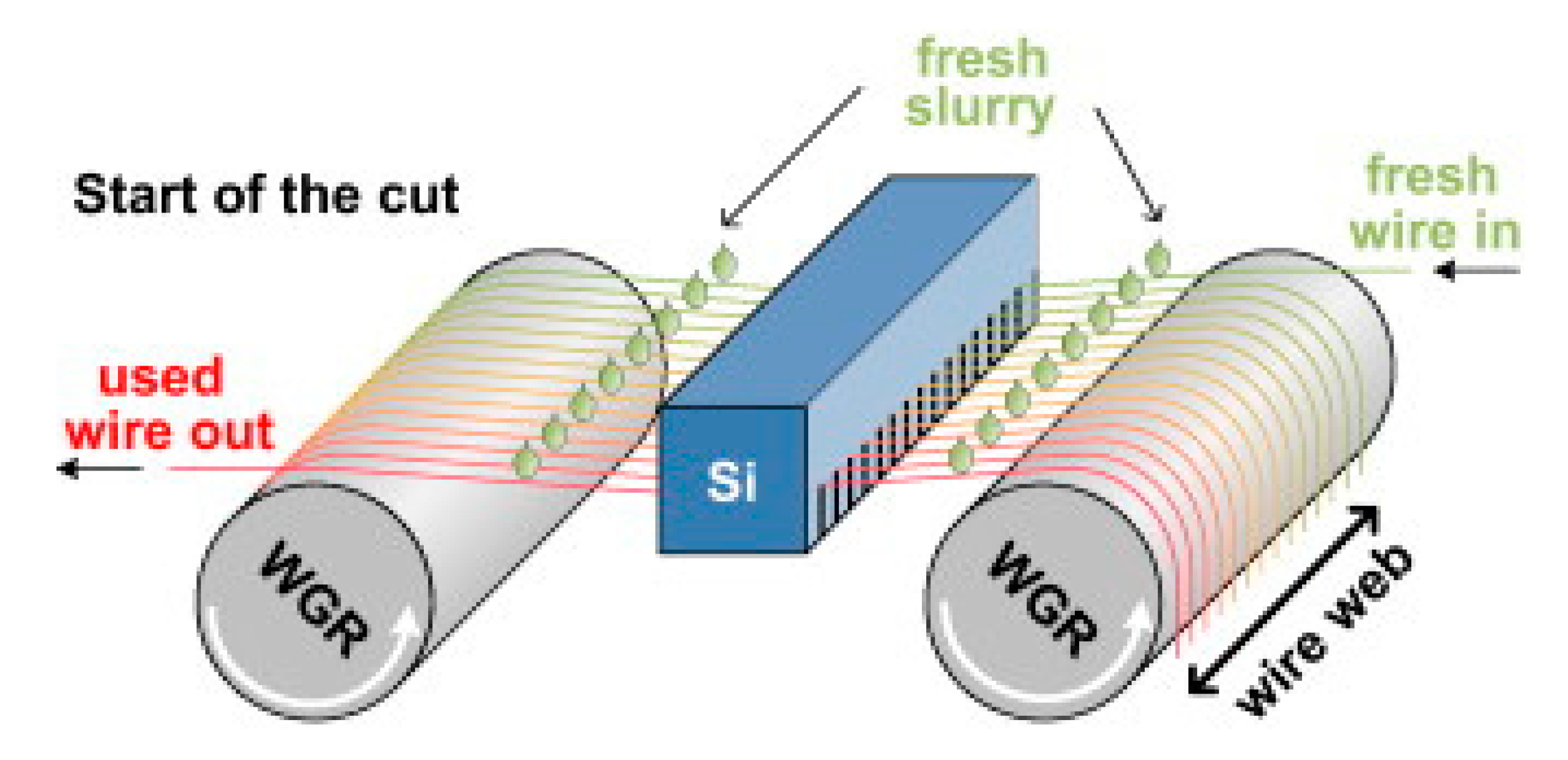
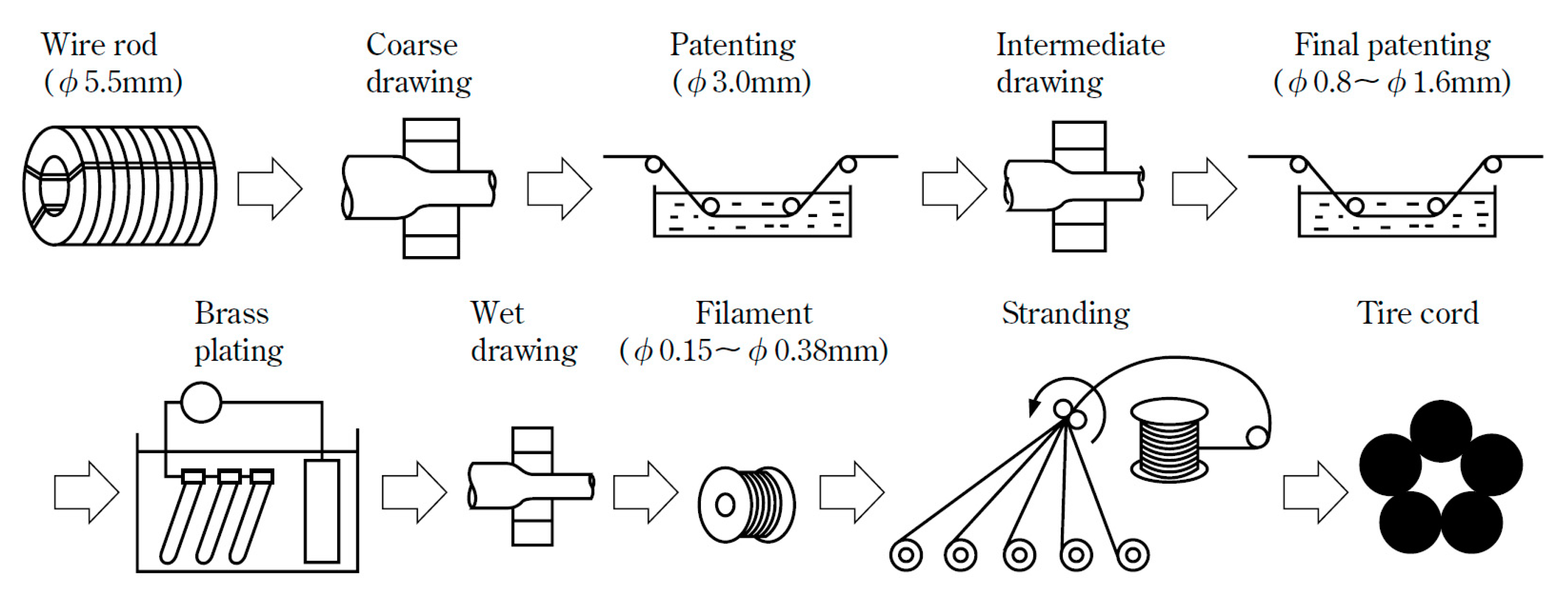
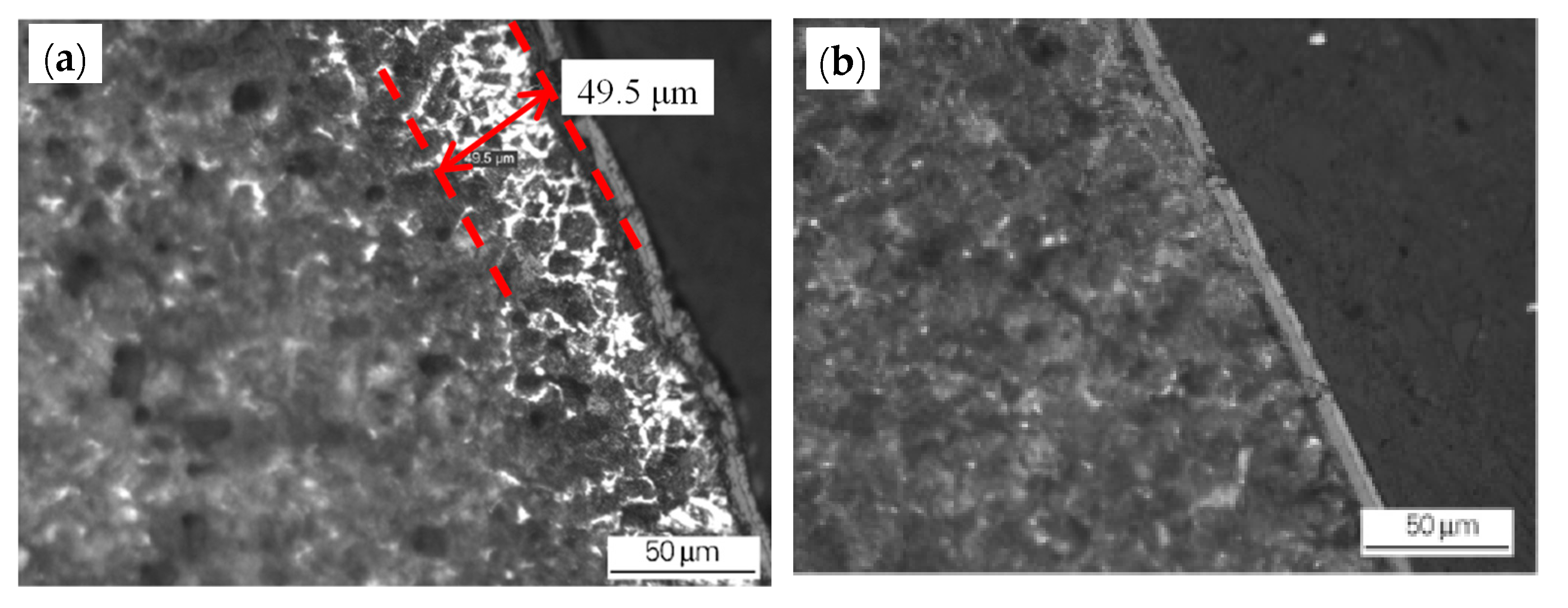
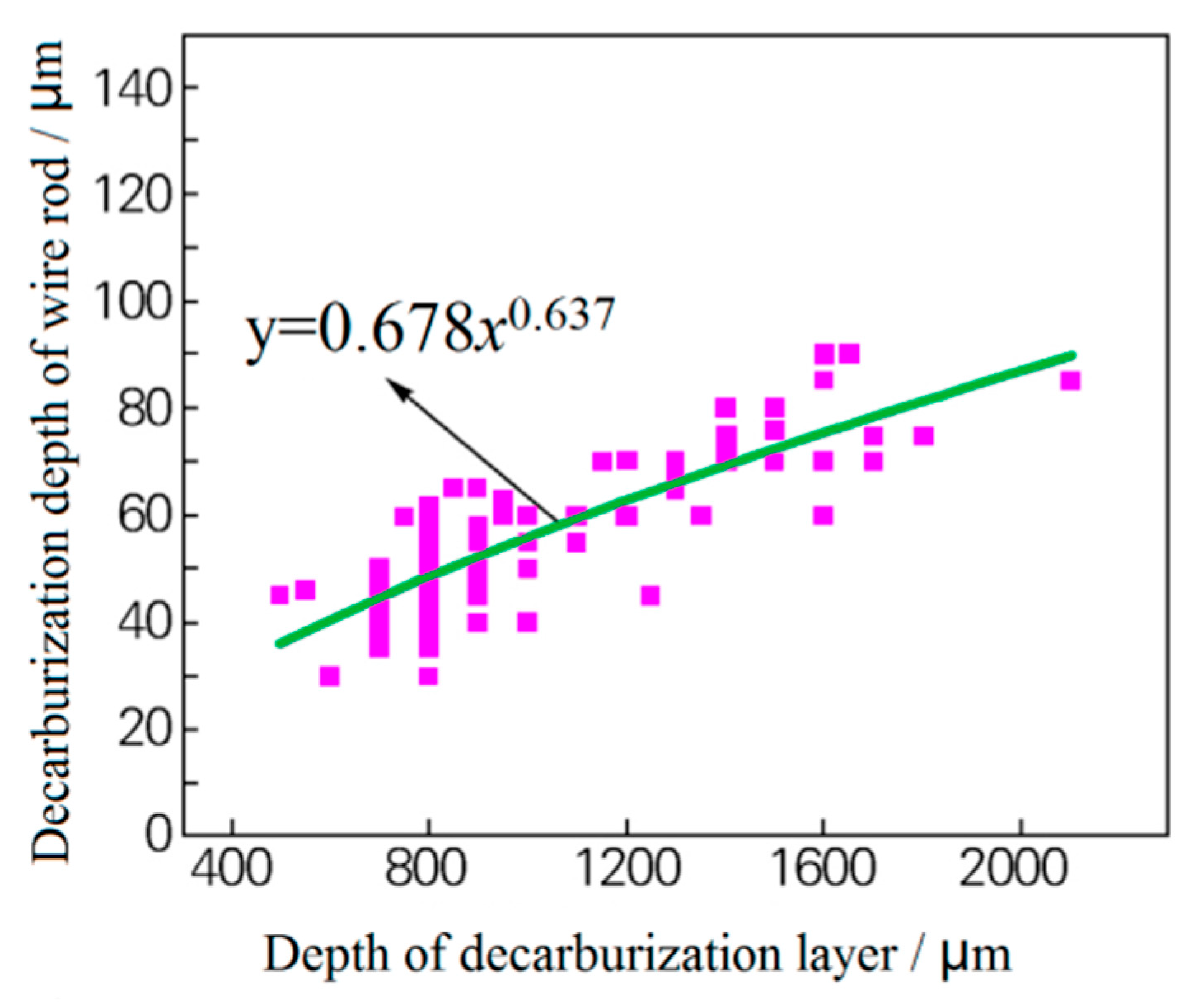
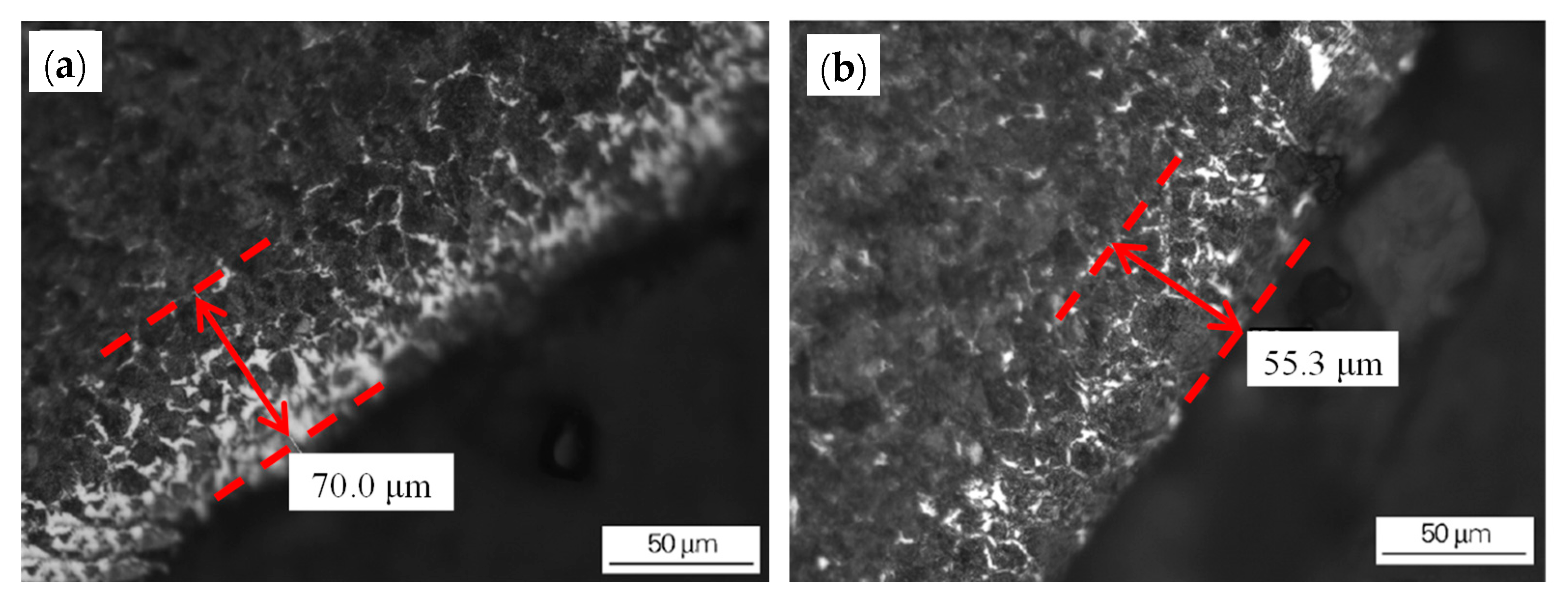
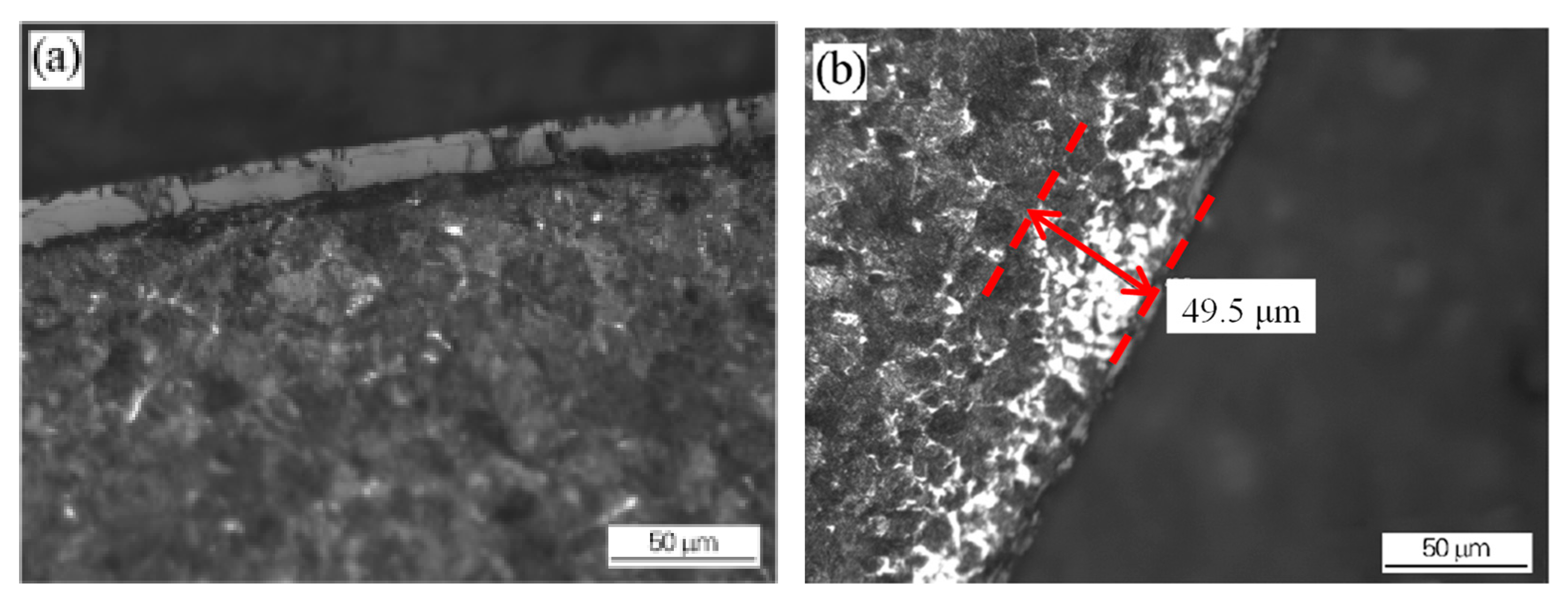


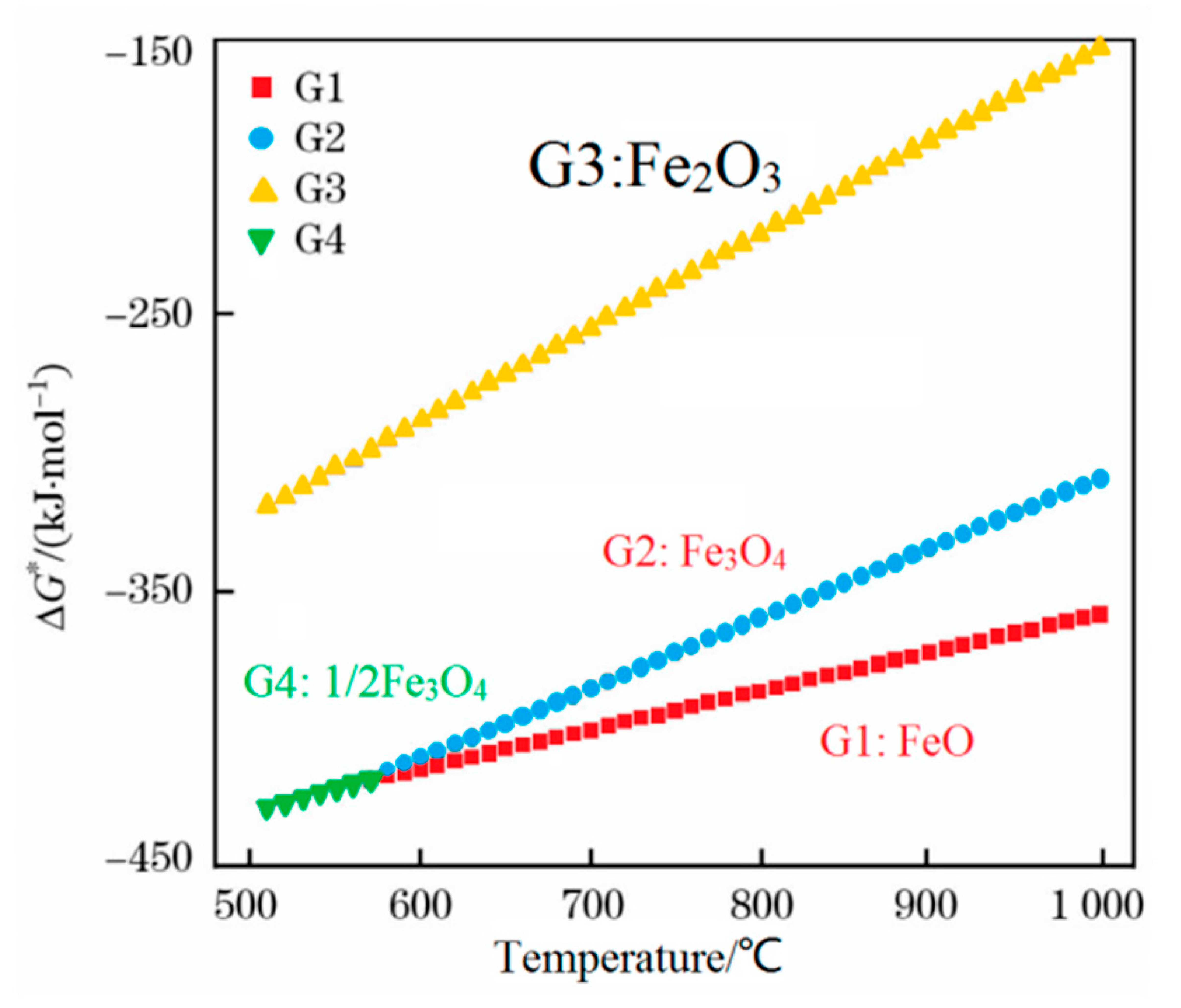
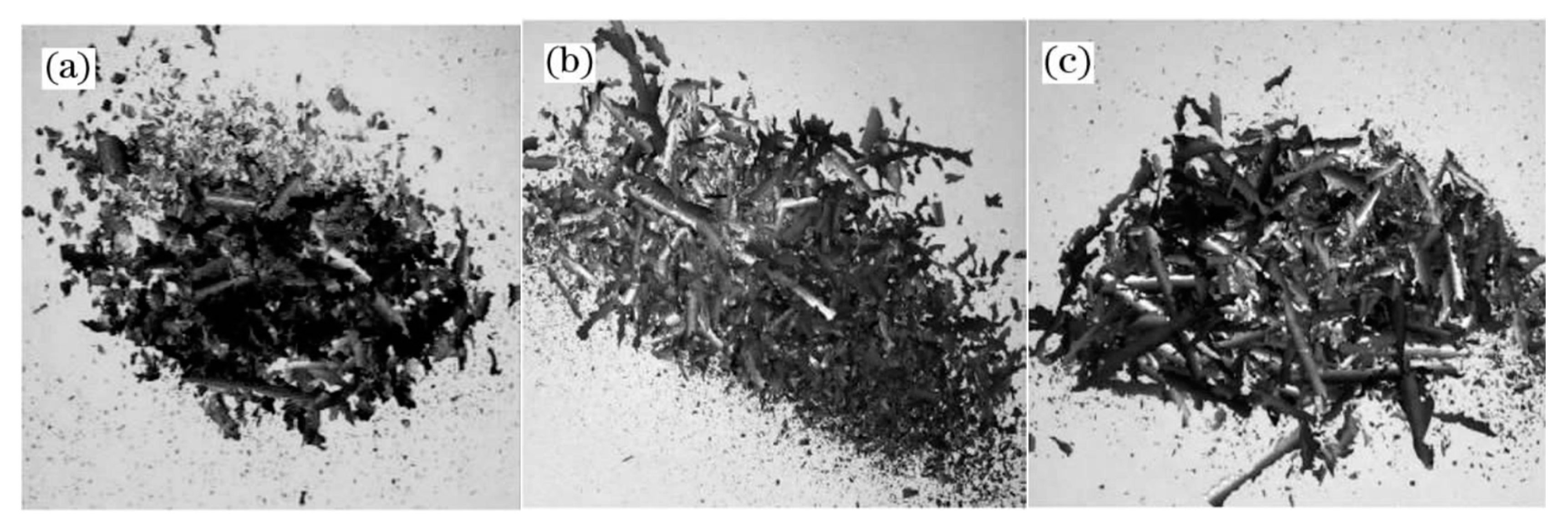
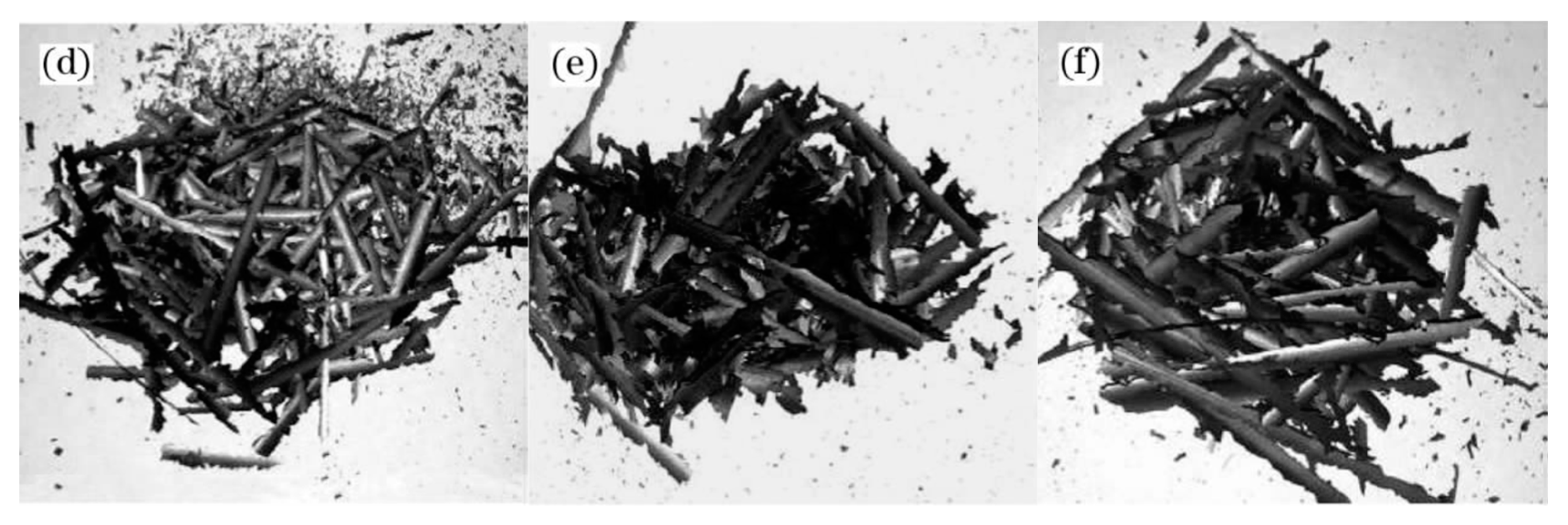
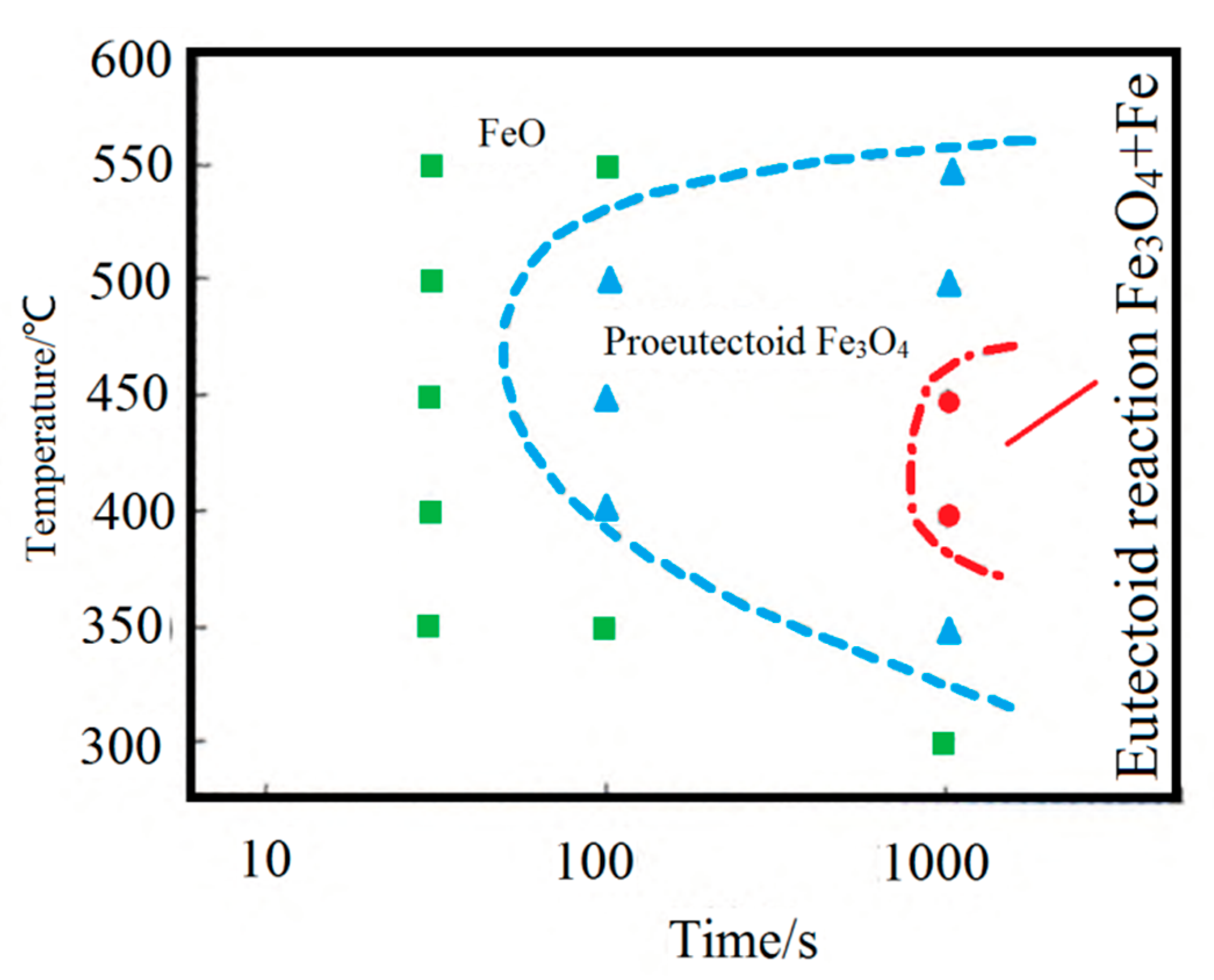
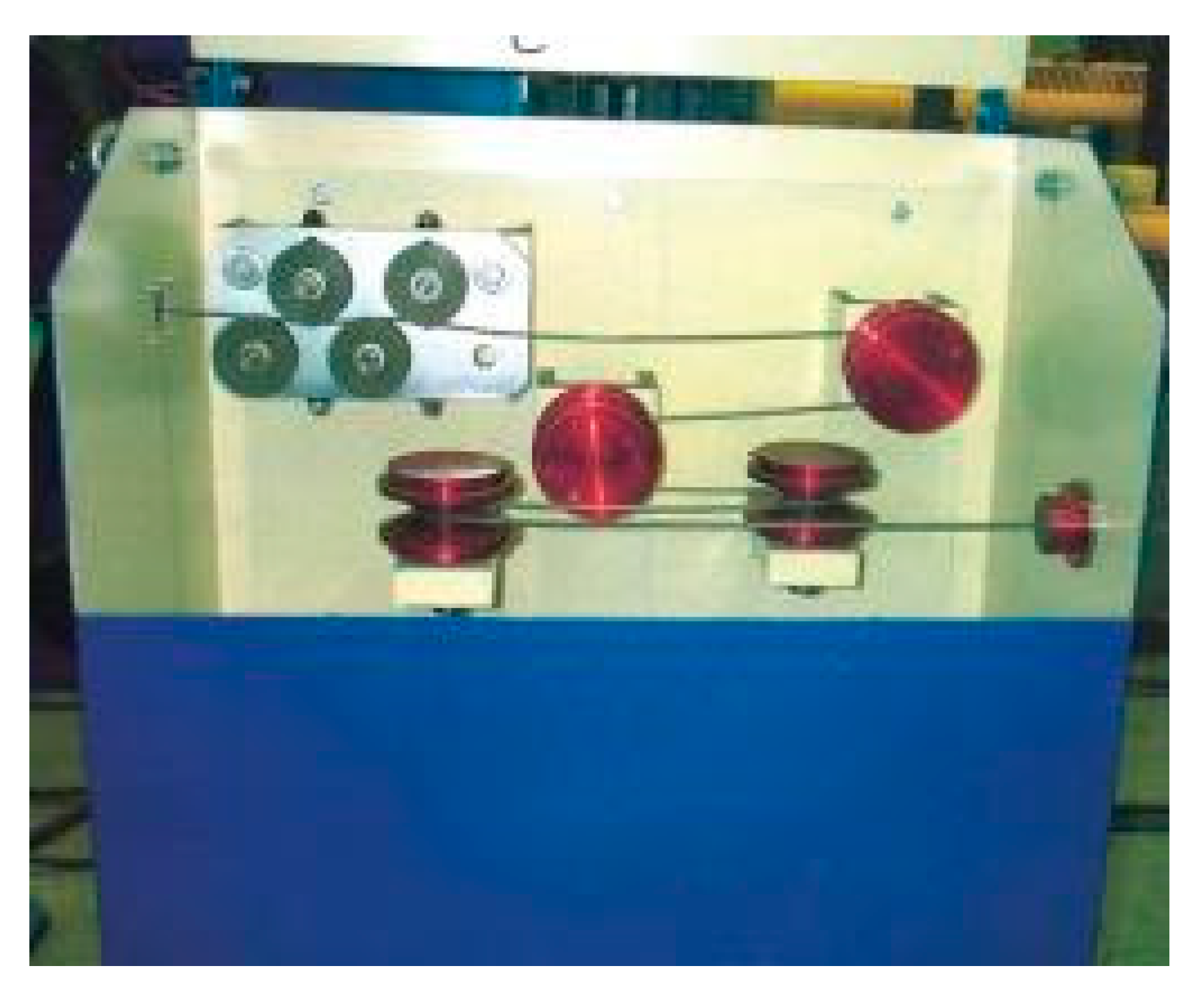

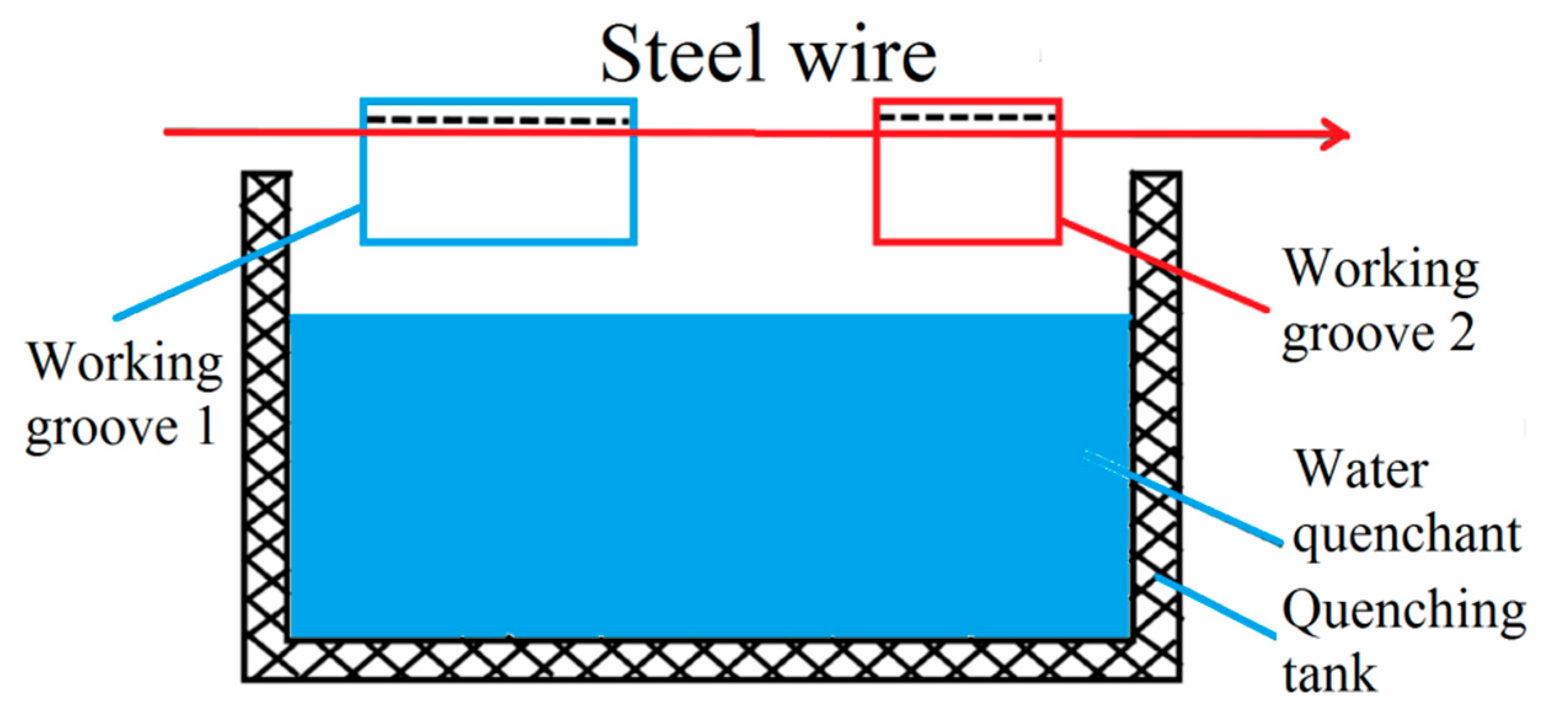
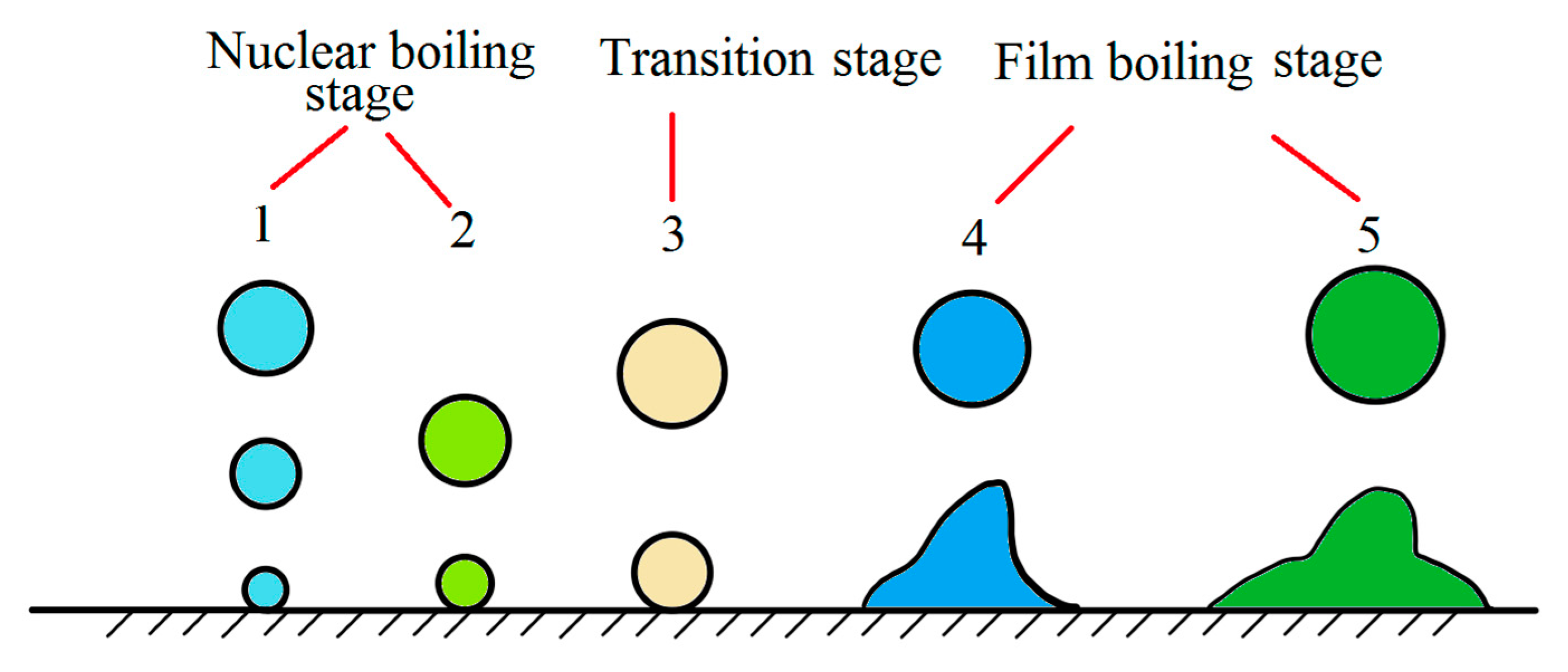



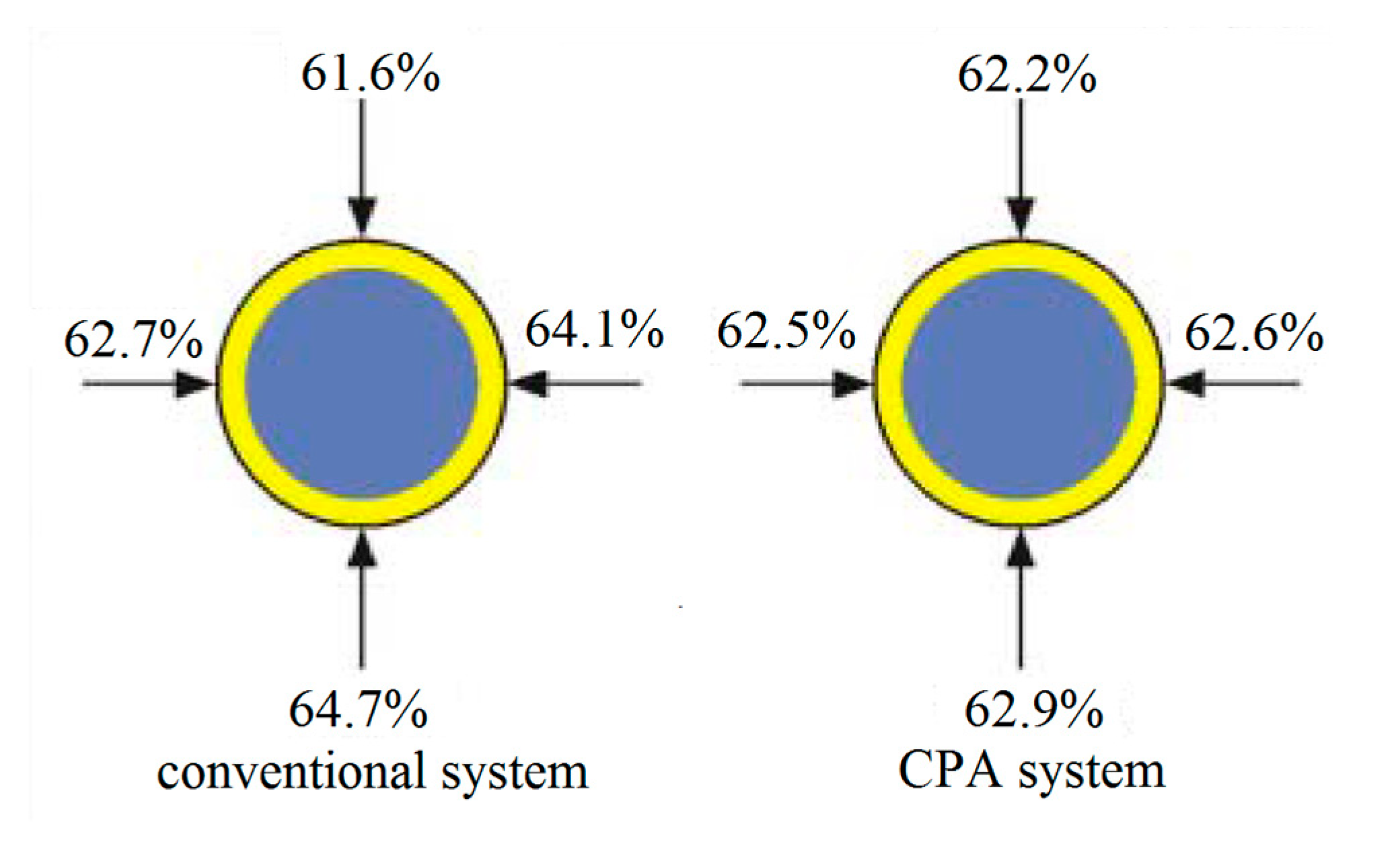
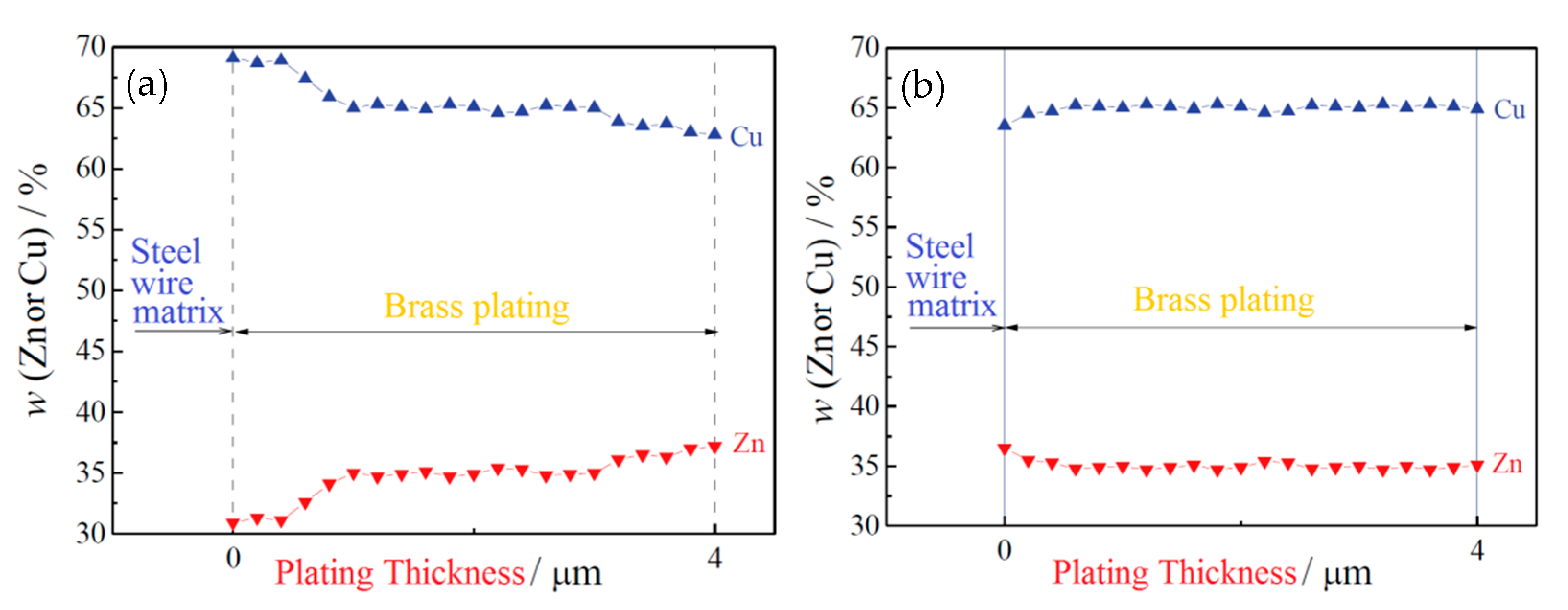

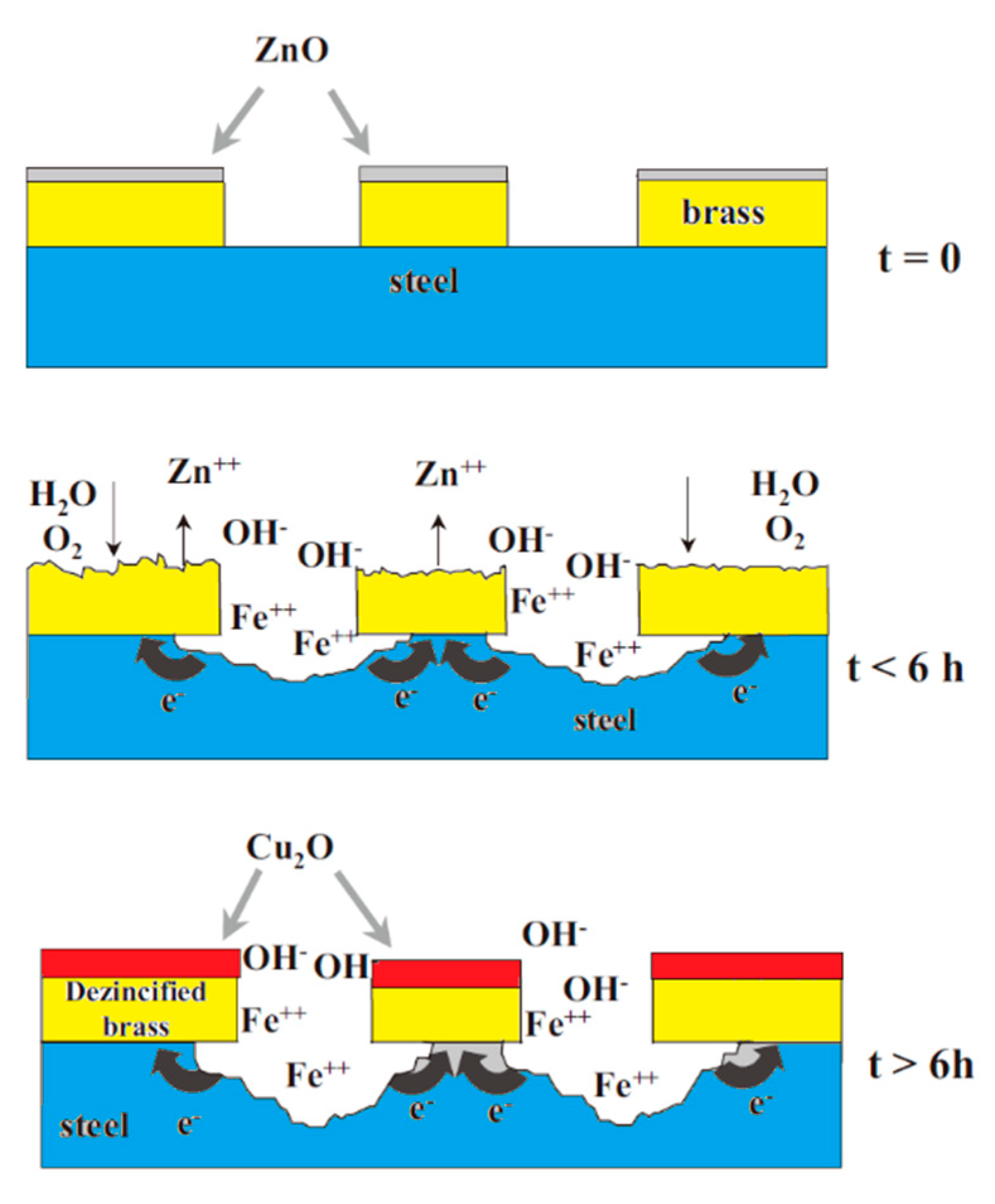


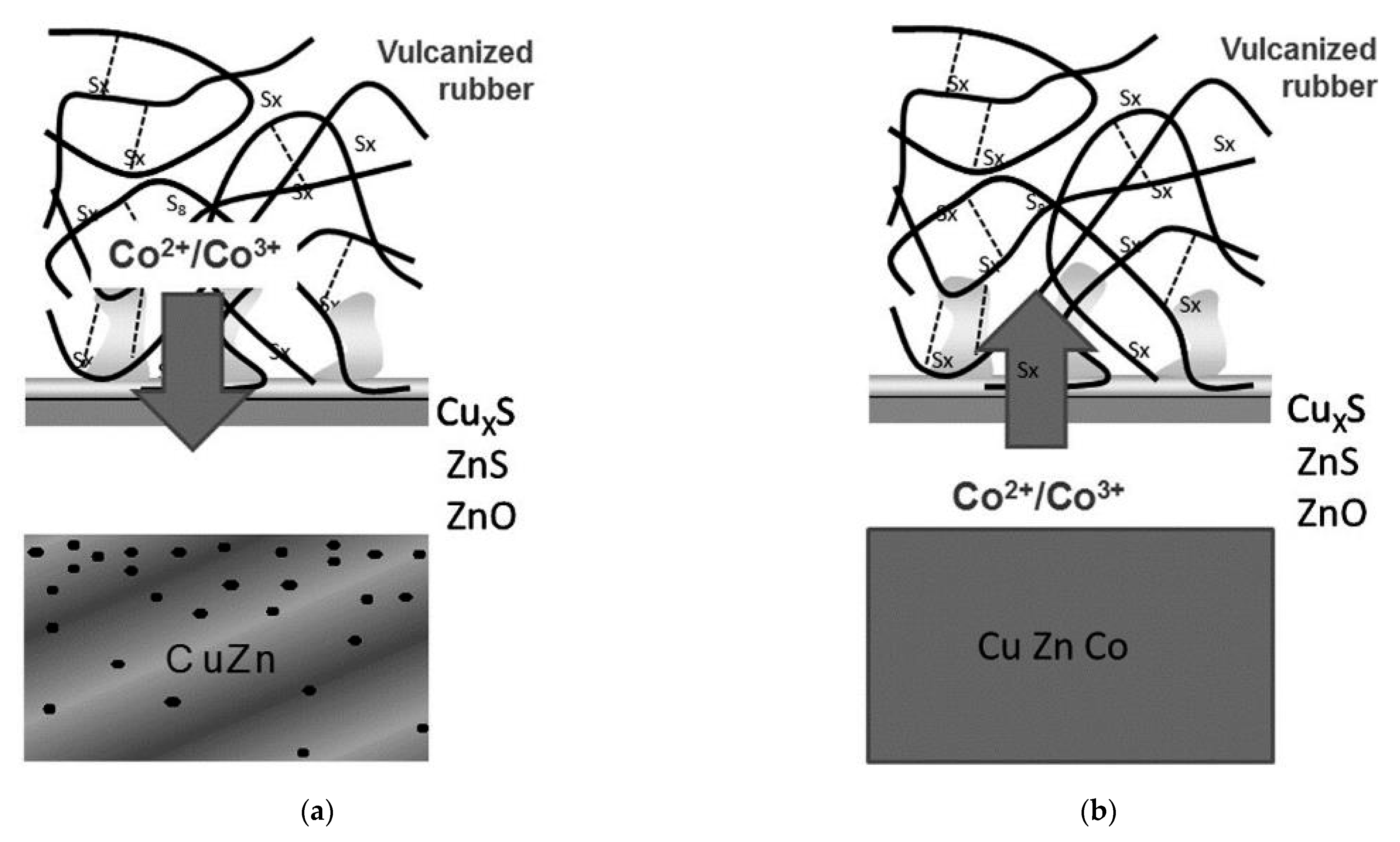

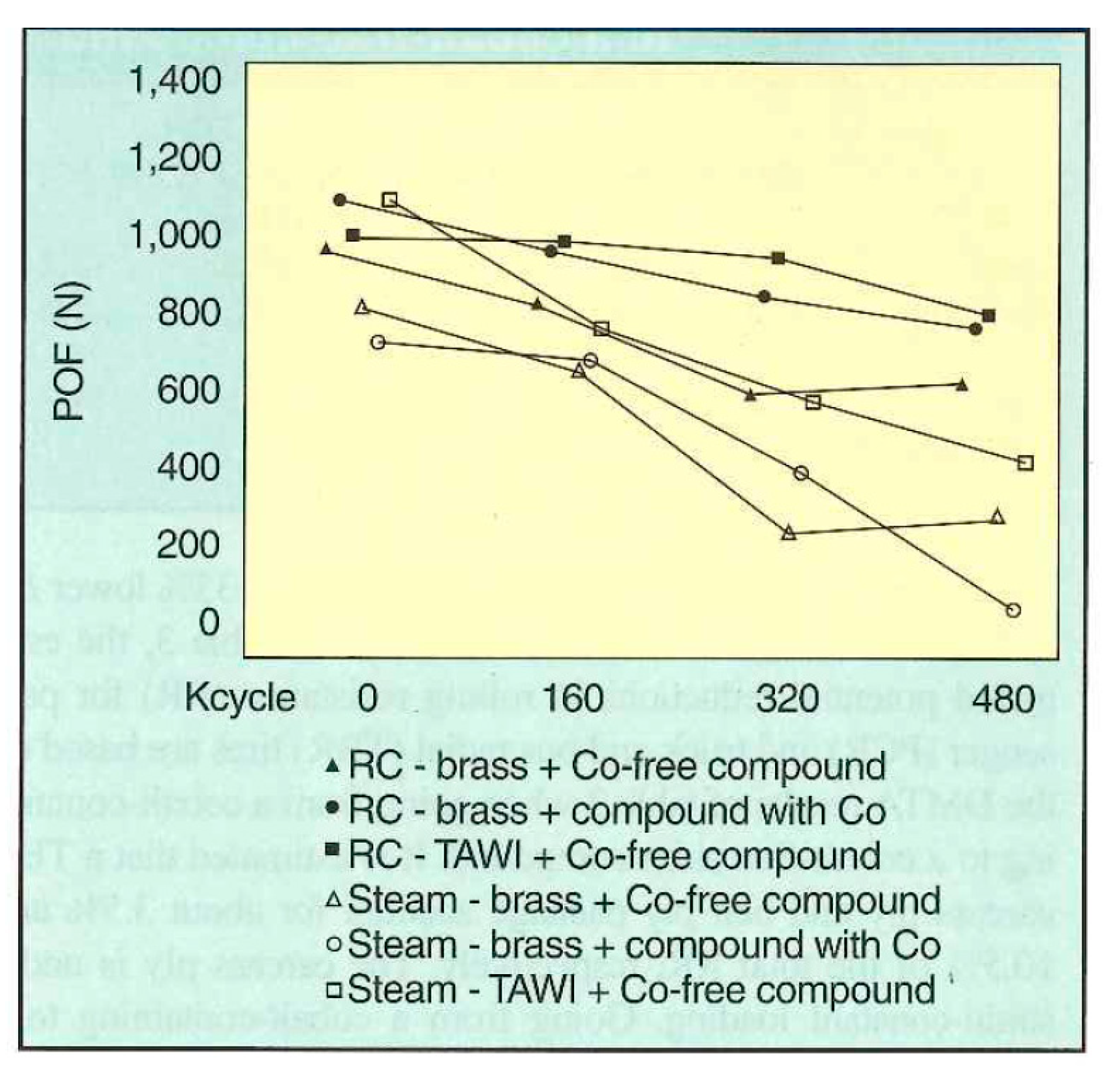
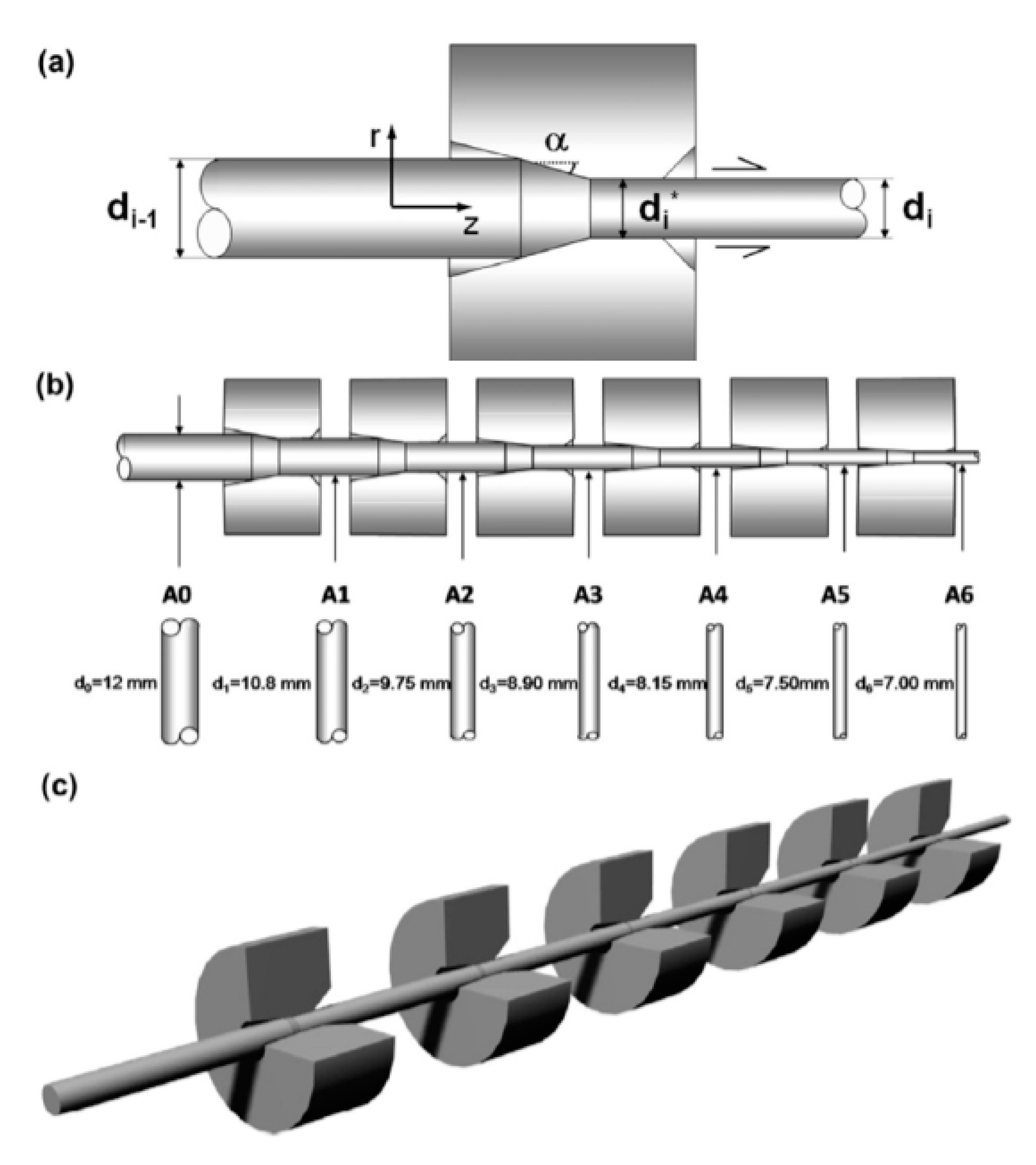
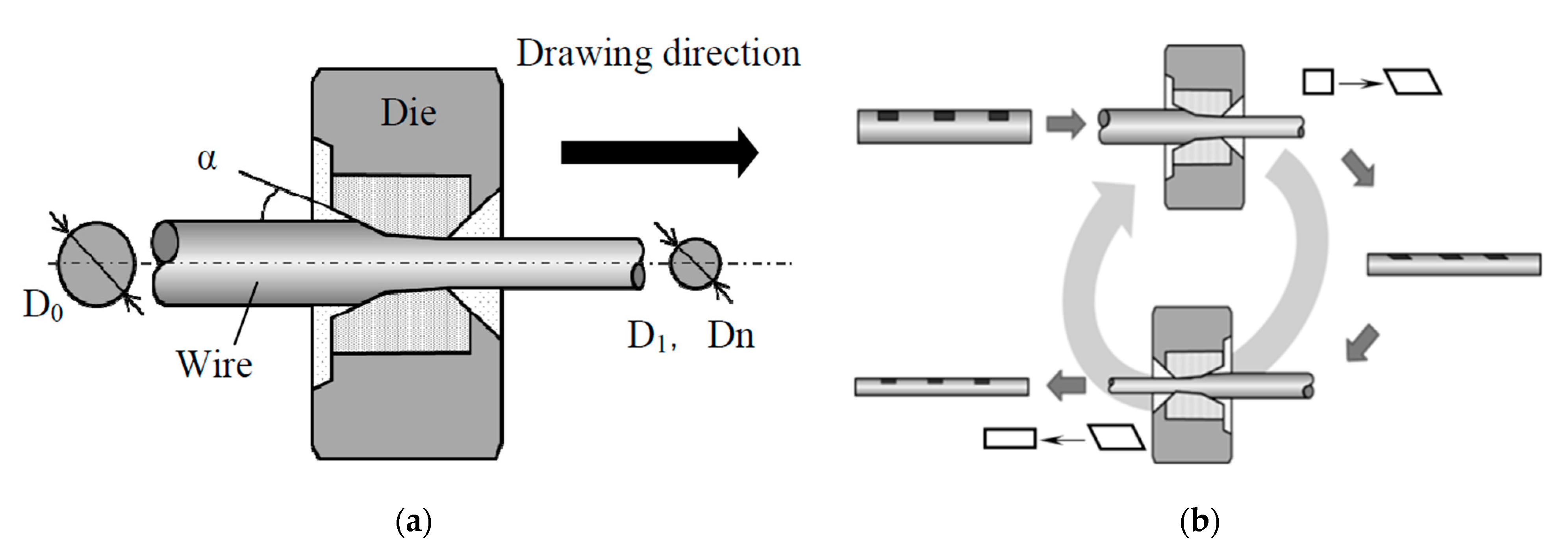
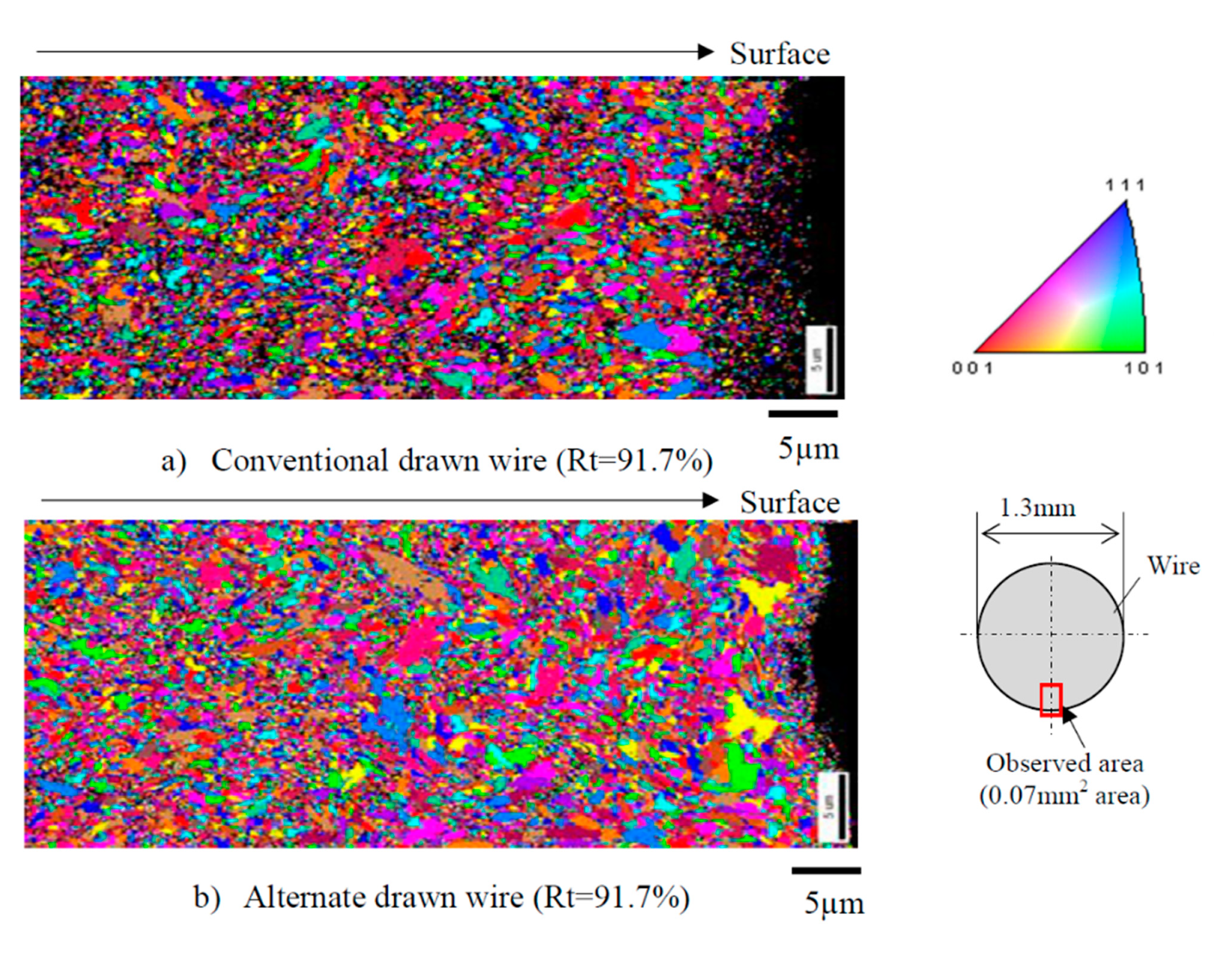
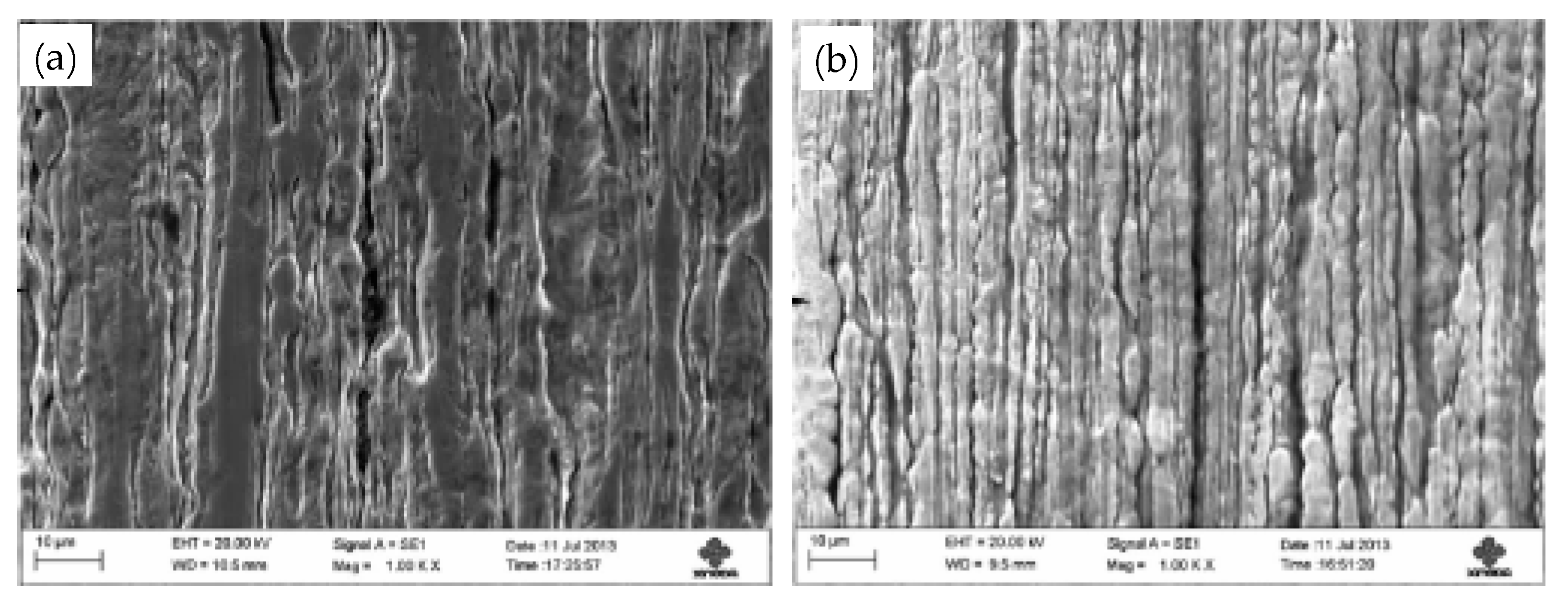
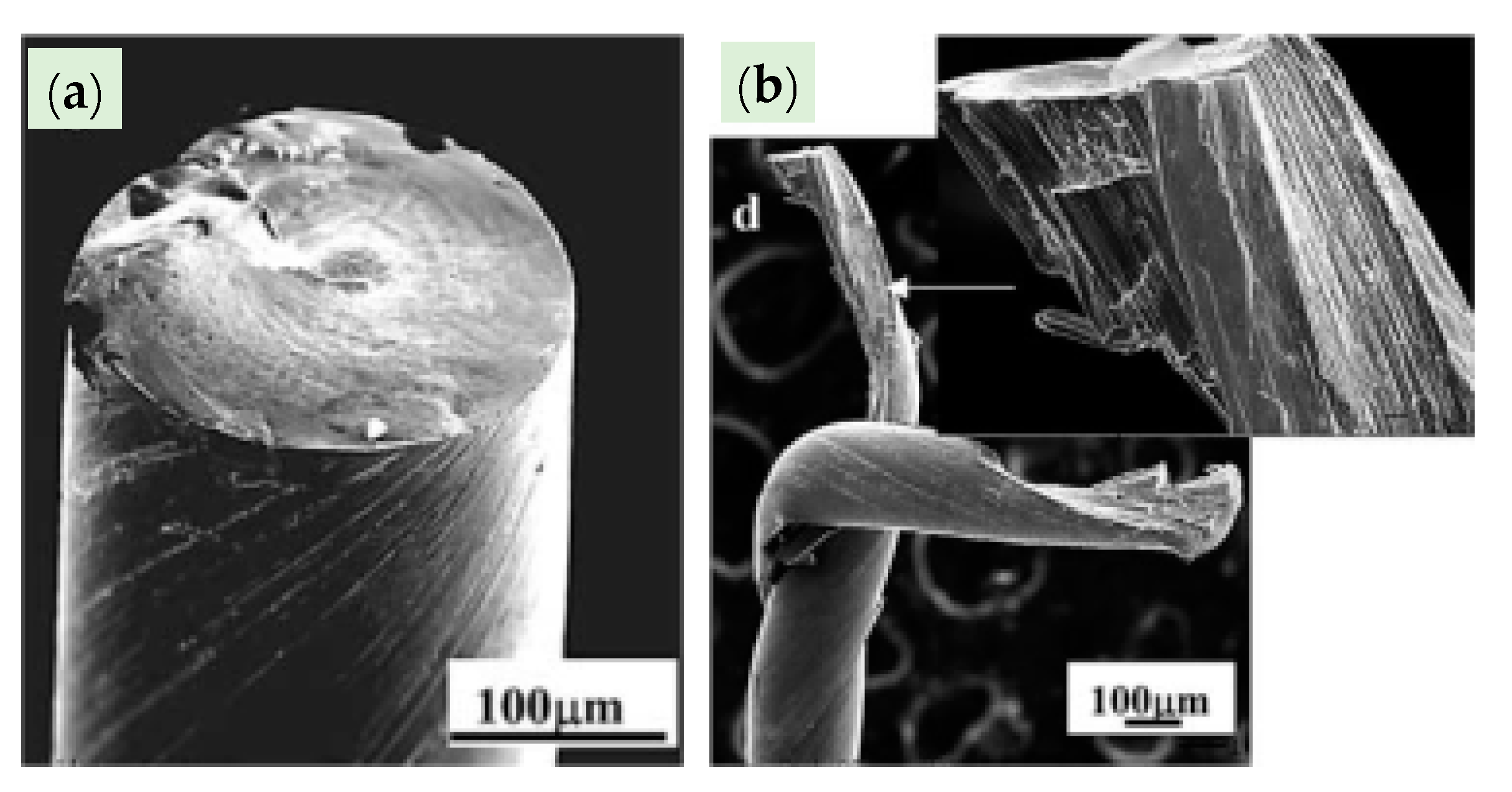


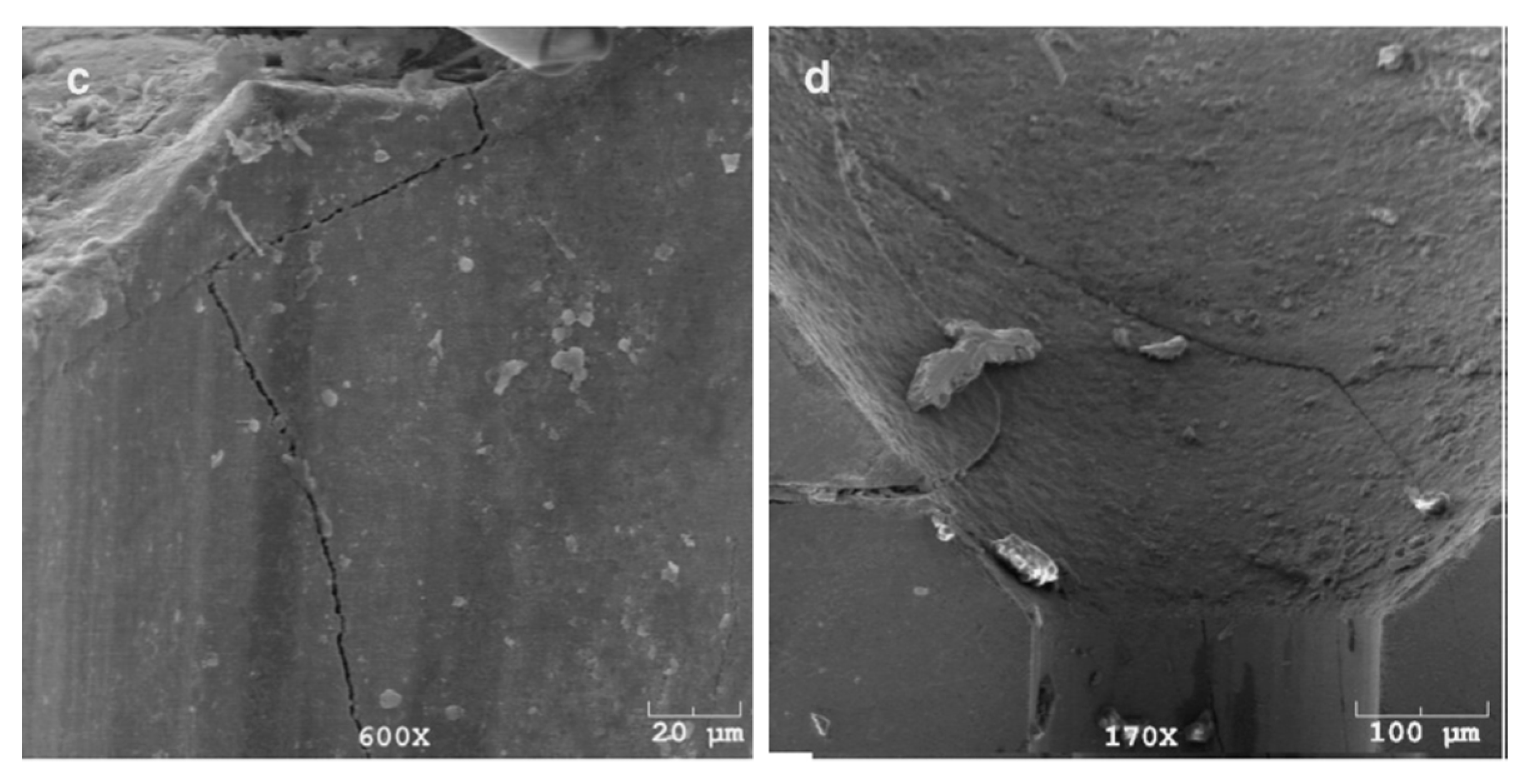


| C | Si | Mn | Cr | P | S | Ni | T.O | N | [Al]s | Cu | Ti |
|---|---|---|---|---|---|---|---|---|---|---|---|
| 0.96 | 0.15 | 0.35 | 0.20 | ≤0.008 | ≤0.006 | ≤0.02 | ≤0.002 | ≤0.004 | ≤0.0003 | ≤0.02 | ≤0.005 |
| Diameter/mm | 0.18 | 0.175 | 0.160 | 0.150 | 0.140 | 0.130 | 0.120 |
|---|---|---|---|---|---|---|---|
| Tensile strength/MPa | 3400 | 3400 | 3600 | 3700 | 3750 | 3800 | 4000 |
| Type | Mechanism | Main Consumed Substances | Impact on the Environment | Weakness |
|---|---|---|---|---|
| Pickling | Chemical reaction | Acid and other chemicals | Waste acid, acid mist, and washing wastewater | Pressing equipment might not be clean, increasing the consumption and polluting the environment |
| Electrolytic pickling | Slight erosion | Electric energy and electrolyte | Waste residue | High power consumption and waste |
| Bending roller | Mechanical deformation | Roll | A small amount of dust | Not clean enough, not suitable for high-speed drawing |
| Wire brush | Mechanical cleaning | Brush made of steel wire | A small amount of dust | Not clean enough |
| Ultrasonic cleaning | Ultrasonic | Electric energy and phosphoric acid cleaning solution | Waste residue | Slow |
| Shot blasting | Mechanical collision | Power and steel shot | A small amount of dust | High cost |
| Advantages of CPA Electroplating Technology [30] | Disadvantages of Conventional Brass Plating Technology [28,31,32,33,34,35] |
|---|---|
| (1) Greatly improves production efficiency. CPA is not limited by wire diameter, coating composition, and weight during the steel wire production with different diameters. Equipment utilization rate reaches 100%, significantly improving production efficiency. | (1) Utilization rate is low. The standard power plating production line can only produce regular steel wire with a specific diameter, brass composition, and electroplating weight. Should steel wire with different specifications be required, the electroplating production line’s flexibility will be limited by the interaction between steel wires. In this way, the utilization rate of the system is limited to 70%. When steel wire with a different diameter needs to be produced at the same time, the speed of steel wire, electroplating current, and coating composition are challenging to match, yielding a large number of waste products. |
| (2) Improved surface quality of steel wire. ① Ovality of the steel wire decreases with the uniformity of the coating structure; ② The proportion of β-phase brass decreases significantly; ③ The residual scrap on the surface of steel wire is apparently reduced. | (2) The consumption of plate material is high. In the conventional system production, only 30% of the positive plate material can be used for electroplating. Due to the uneven dissolution, the early exchange of positive plates reduces the plating amount on the steel wire. The positive electrode waste also needs to be recycled to increase the subsequent additional cost. |
| (3) Improved the quality of products ① Improved steel wire surface quality, reduce irregular deformation of steel wire in the subsequent drawing, as well as the residual stress, so the verticality and torsional performance of steel wire are improved; ② Adhesive force between steel wire and rubber is increased by 5%, so the steel wire’s corrosion resistance is improved. | (3) Monofilament production parameters cannot be tracked and recorded. The conventional system cannot track and record the plating condition of each steel wire according to the requirements of ISO9000, and it can only provide the operational parameters of the whole production line. |
| (4) Reduced production costs. ① Ensure the complete consumption of the positive plate. ② Cathode waste produced by conventional electroplating can be used to reproduce the CPA electroplating technology system, which saves resources. ③ Consumption of drawing die reduced by 50%. ④ During the wet drawing and twisting breakage rate is reduced by 50%. ⑤ Time required for the equipment installation, repair, and maintenance is significantly reduced. ⑥ Equipment controlled by each employee has increased in average by about 30%, reducing the number of employees. | (4) The product quality is not good. In general, the sliding and rolling contact between the steel wire and the conductive roller will cause the steel wire abrasion, and at the same time, it will cause the groove formation on the cathode roller. Consequently, this will affect the diameter and coating quality of the steel wire and have a negative impact on the adhesion of the steel cord to the rubber. |
Publisher’s Note: MDPI stays neutral with regard to jurisdictional claims in published maps and institutional affiliations. |
© 2021 by the authors. Licensee MDPI, Basel, Switzerland. This article is an open access article distributed under the terms and conditions of the Creative Commons Attribution (CC BY) license (https://creativecommons.org/licenses/by/4.0/).
Share and Cite
Chen, C.; Sun, M.; Wang, B.; Zhou, J.; Jiang, Z. Recent Advances on Drawing Technology of Ultra-Fine Steel Tire Cord and Steel Saw Wire. Metals 2021, 11, 1590. https://doi.org/10.3390/met11101590
Chen C, Sun M, Wang B, Zhou J, Jiang Z. Recent Advances on Drawing Technology of Ultra-Fine Steel Tire Cord and Steel Saw Wire. Metals. 2021; 11(10):1590. https://doi.org/10.3390/met11101590
Chicago/Turabian StyleChen, Changyong, Meng Sun, Bao Wang, Jianan Zhou, and Zhouhua Jiang. 2021. "Recent Advances on Drawing Technology of Ultra-Fine Steel Tire Cord and Steel Saw Wire" Metals 11, no. 10: 1590. https://doi.org/10.3390/met11101590
APA StyleChen, C., Sun, M., Wang, B., Zhou, J., & Jiang, Z. (2021). Recent Advances on Drawing Technology of Ultra-Fine Steel Tire Cord and Steel Saw Wire. Metals, 11(10), 1590. https://doi.org/10.3390/met11101590






